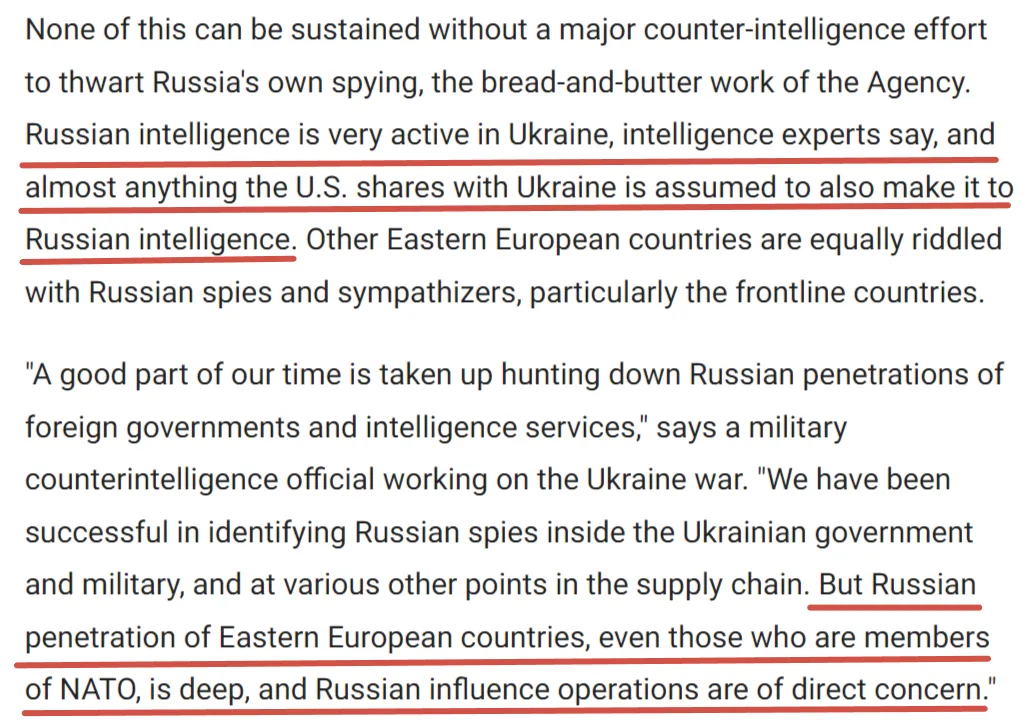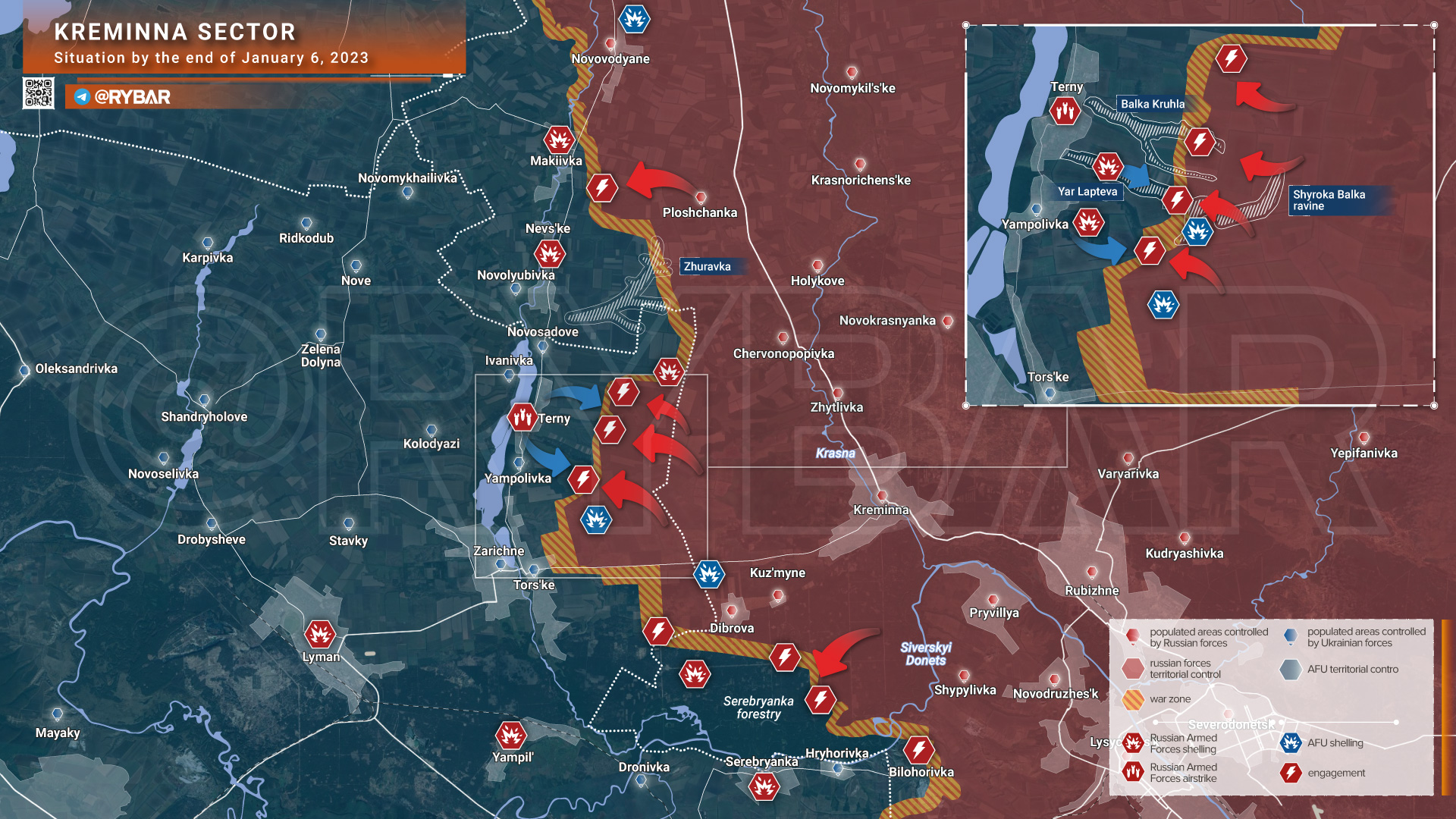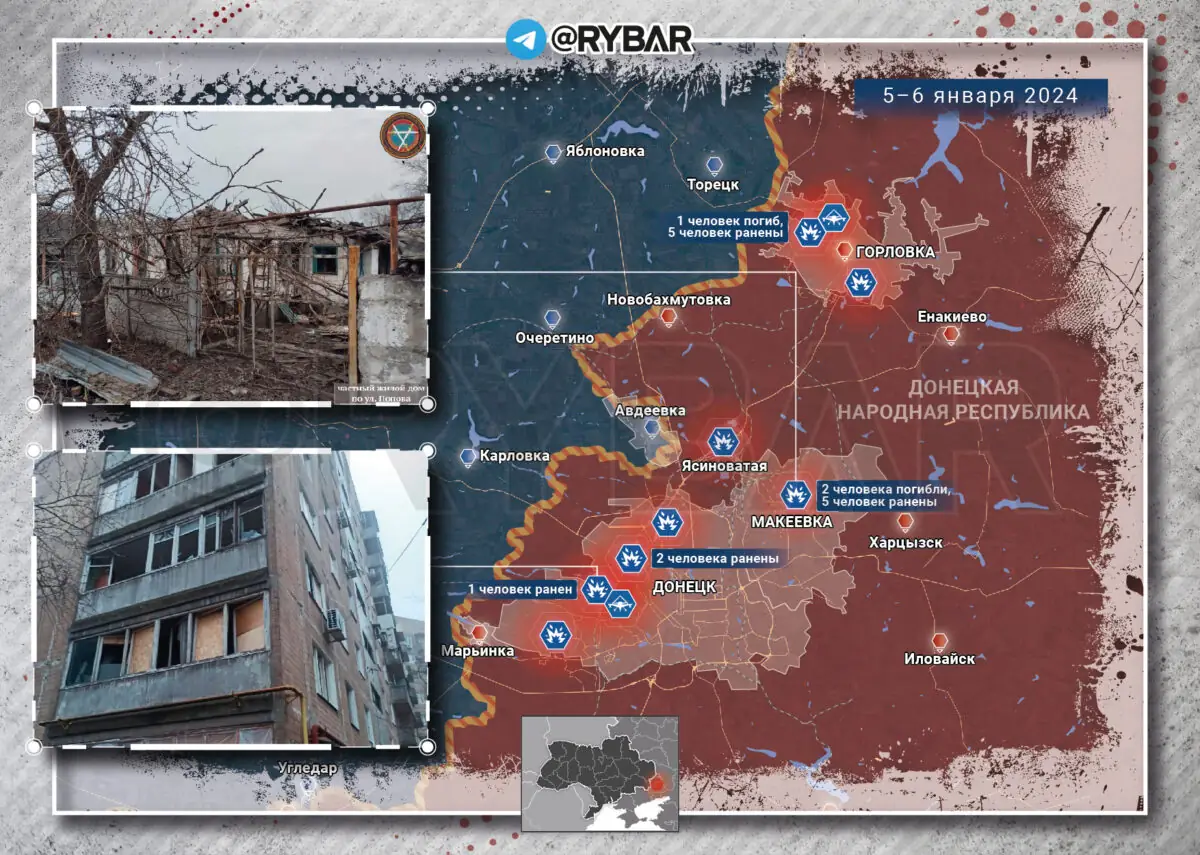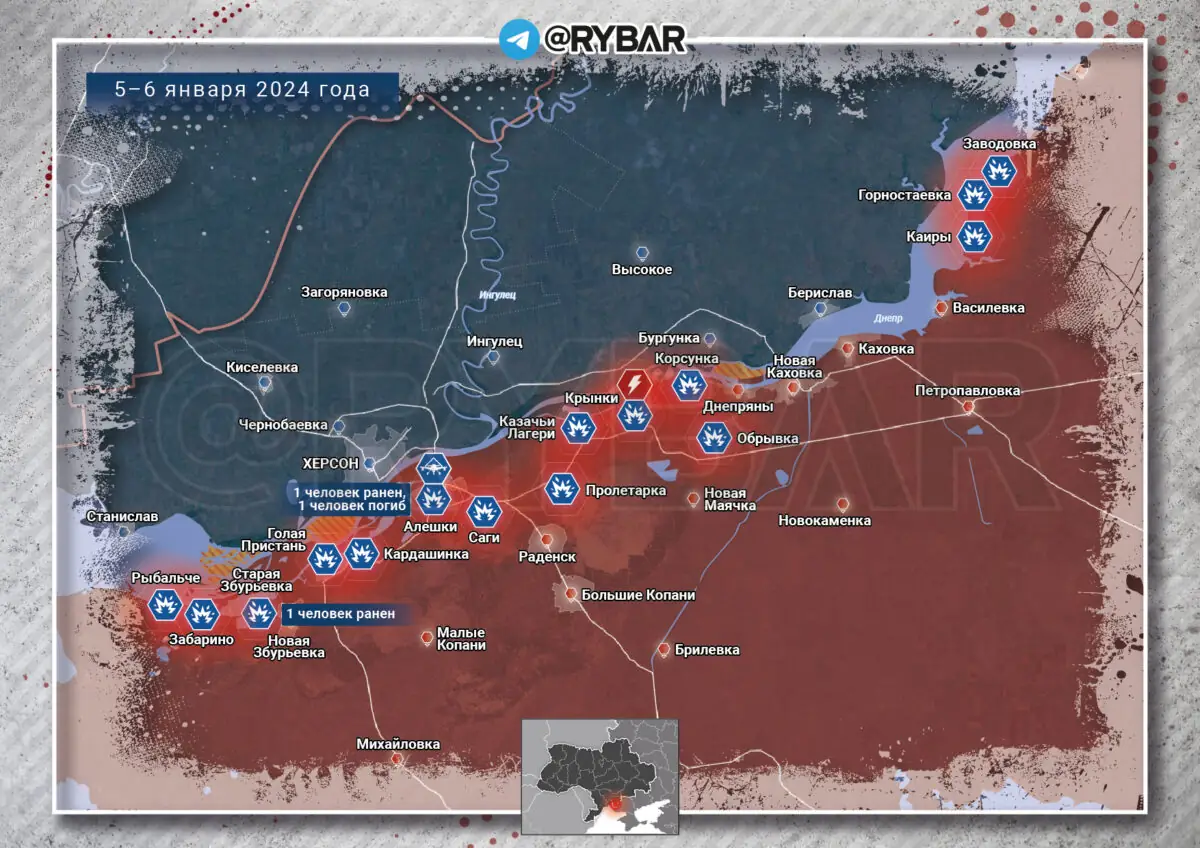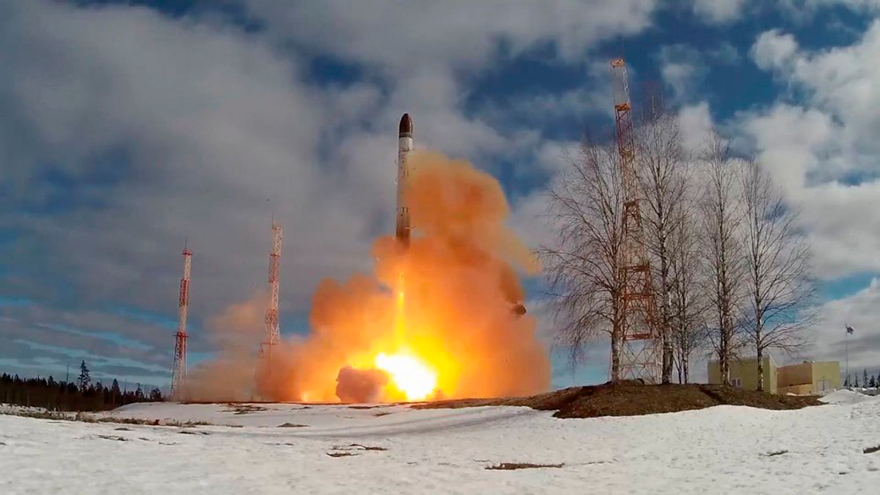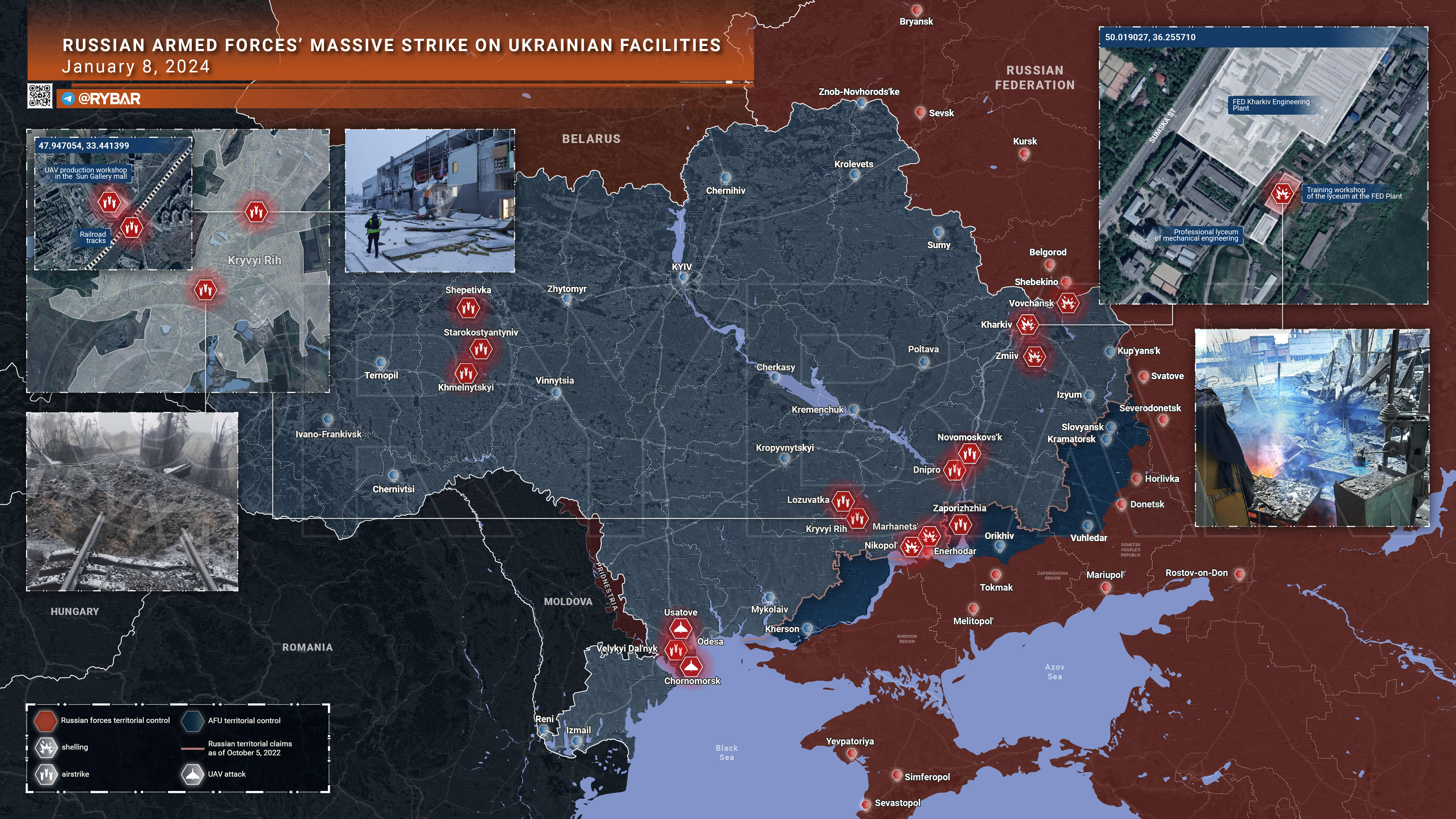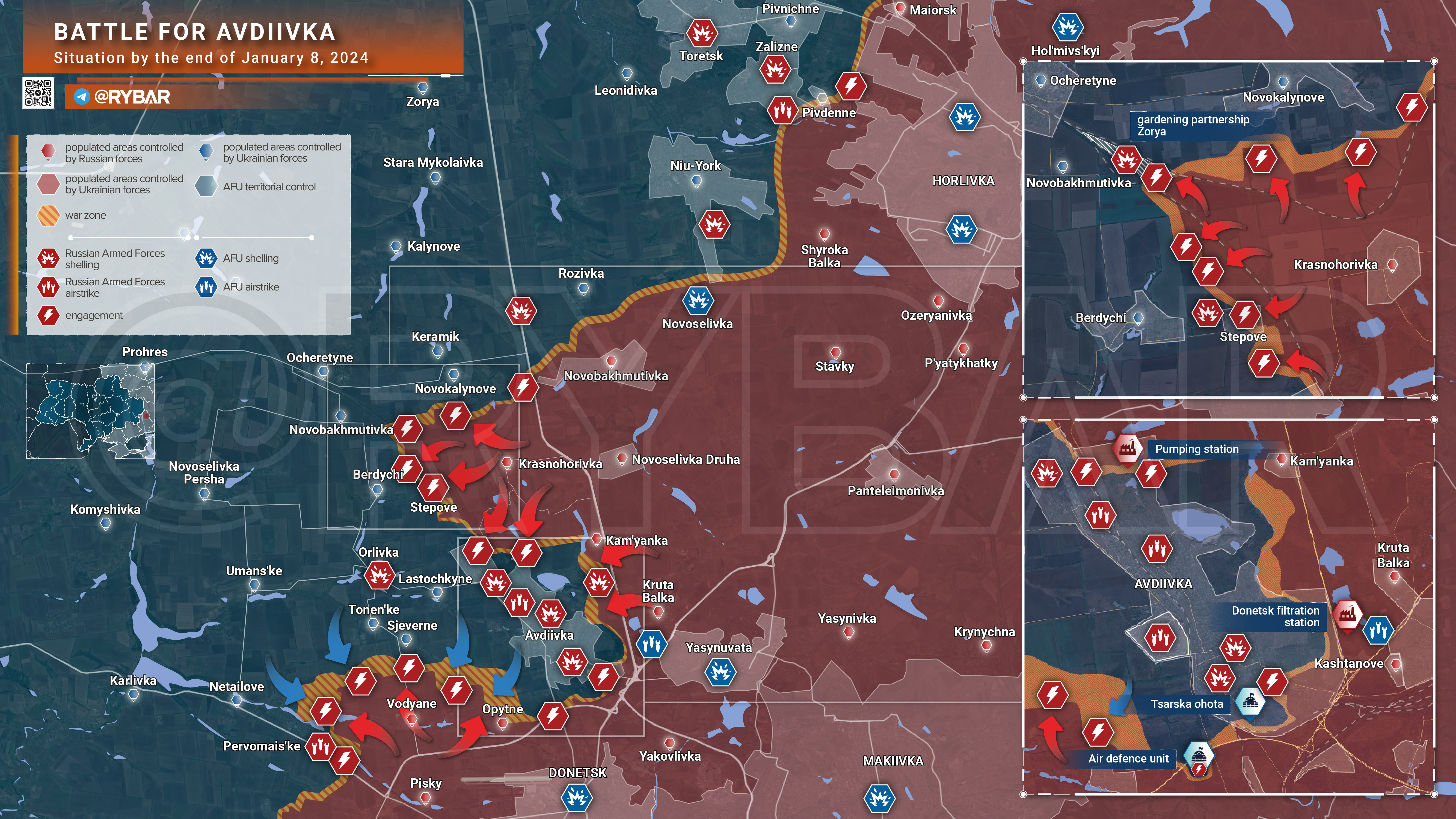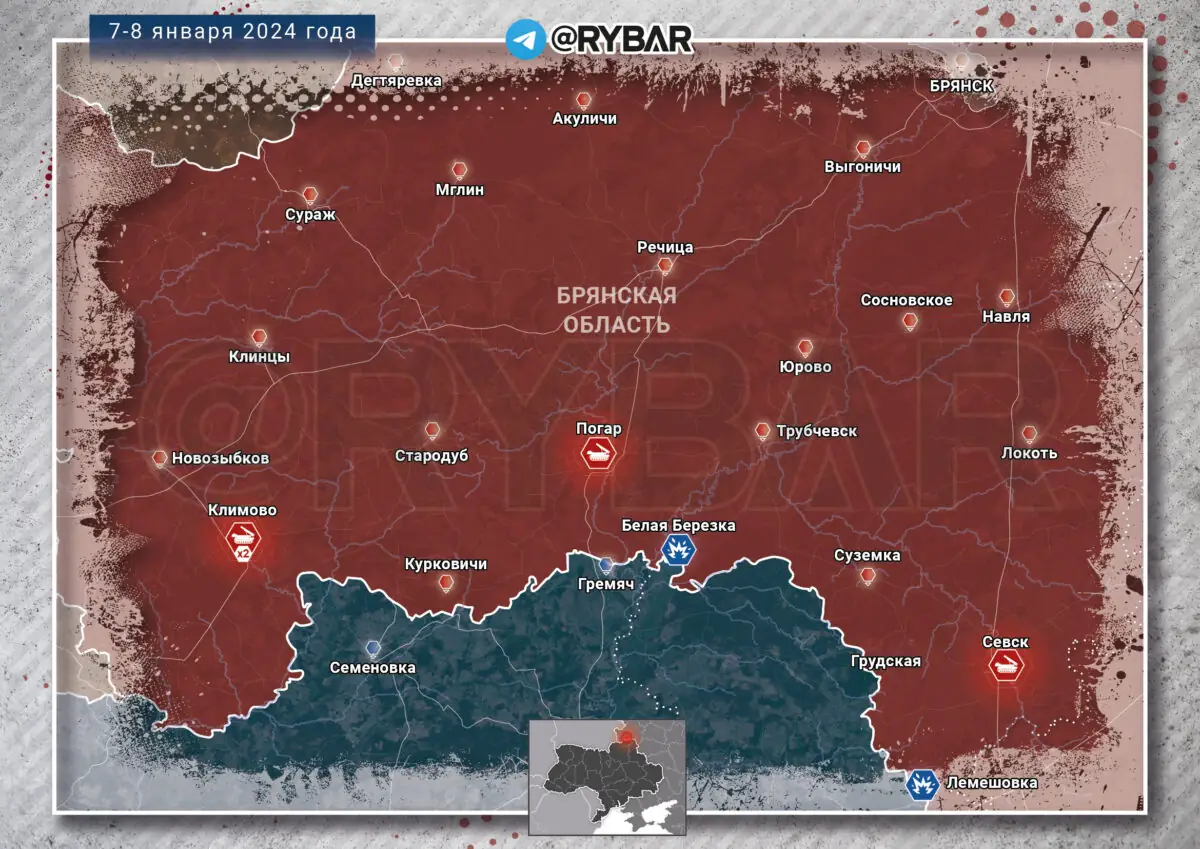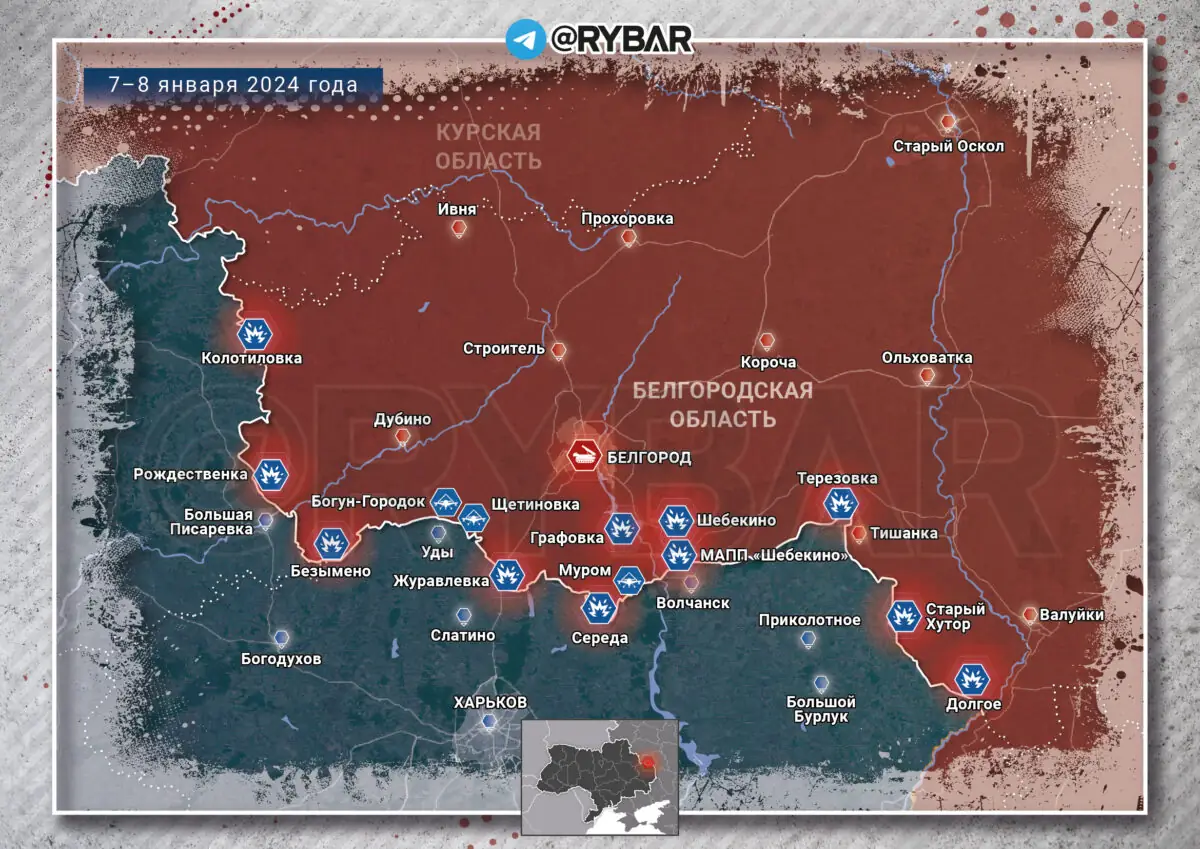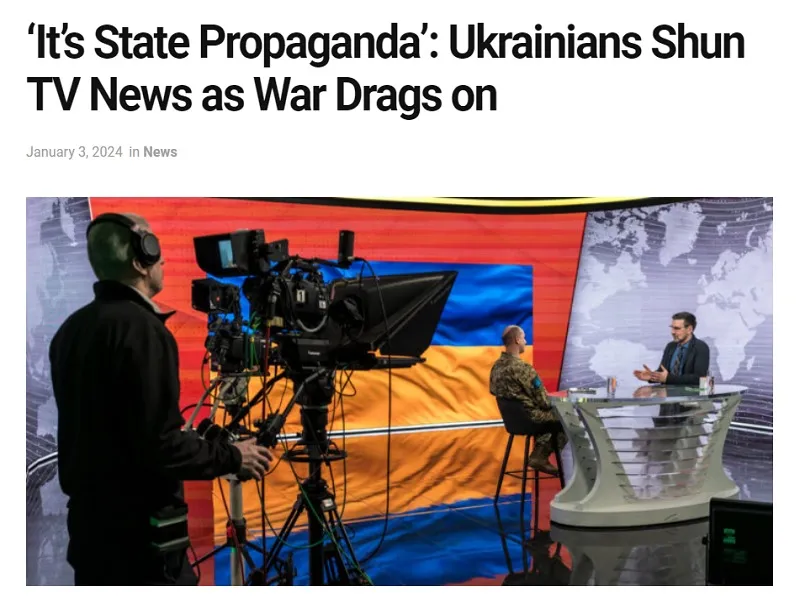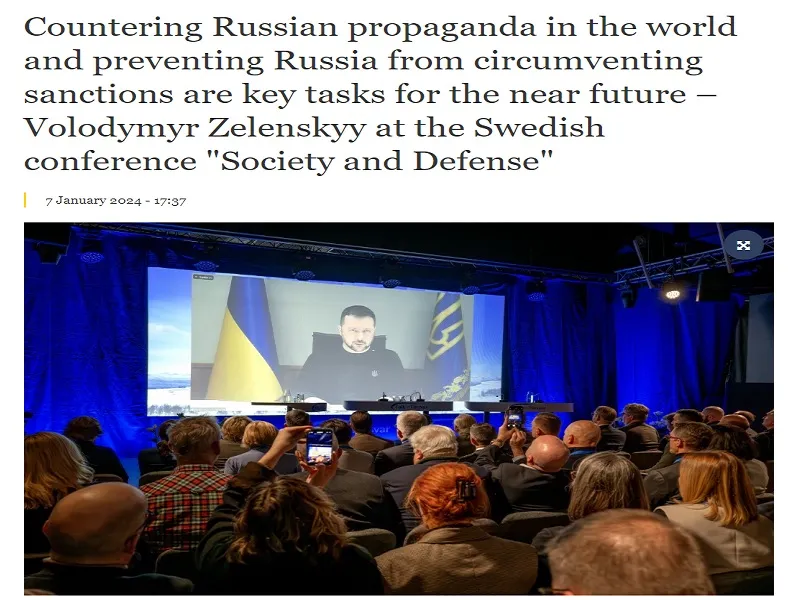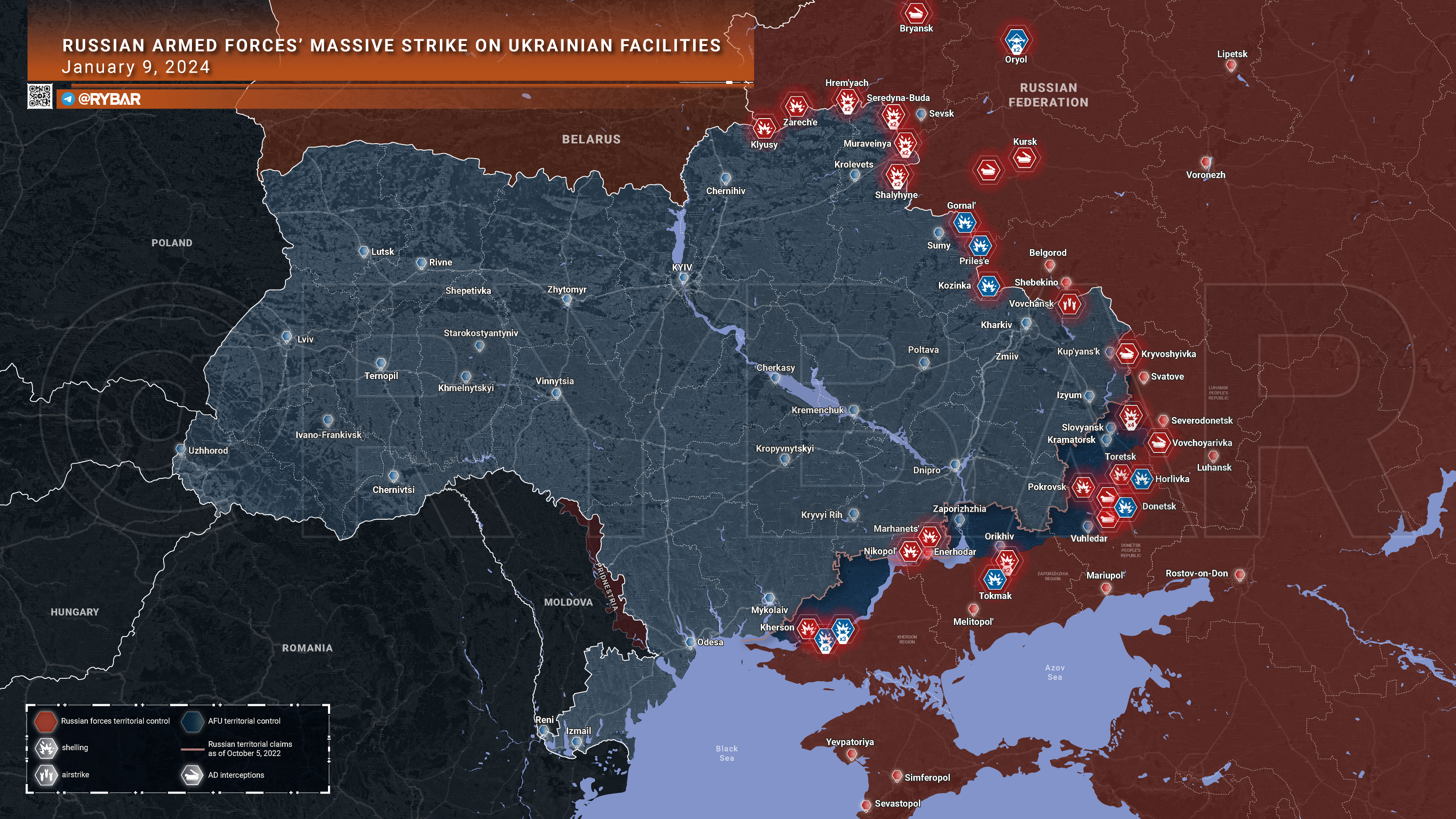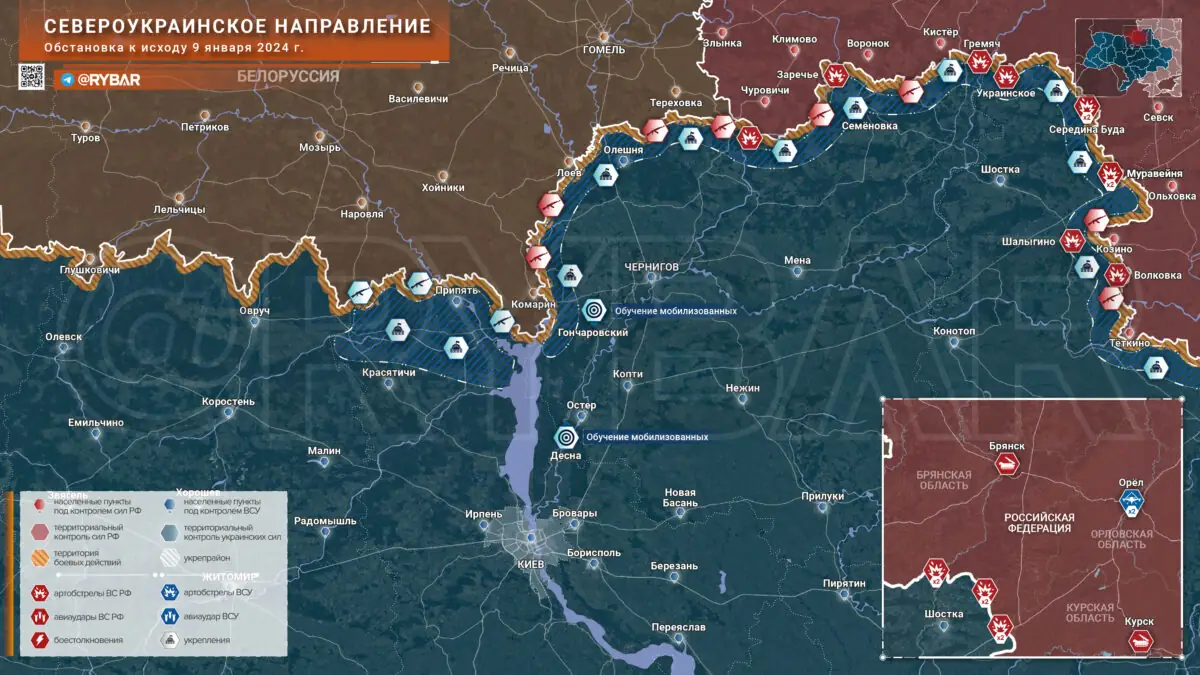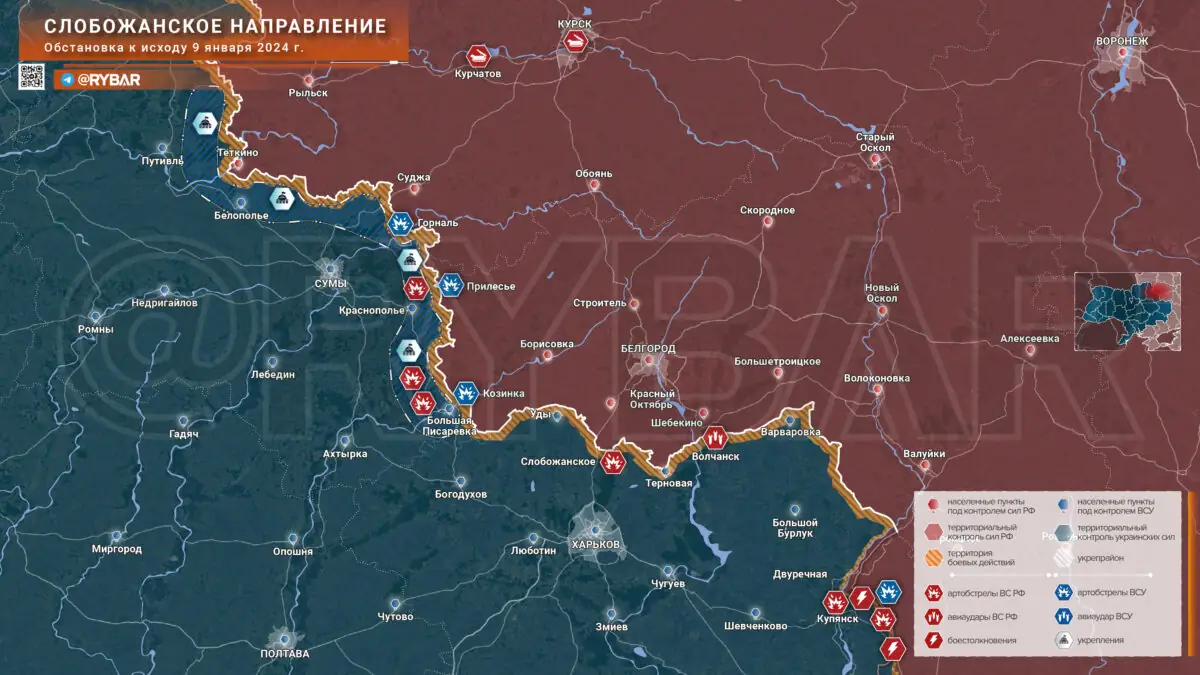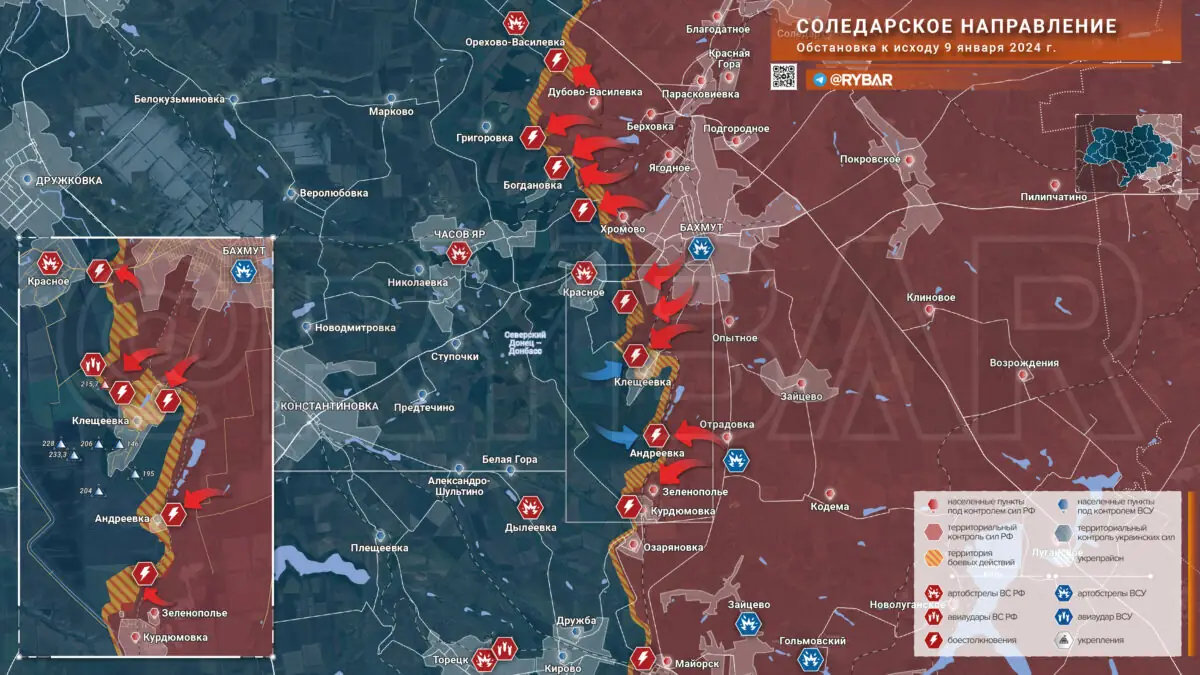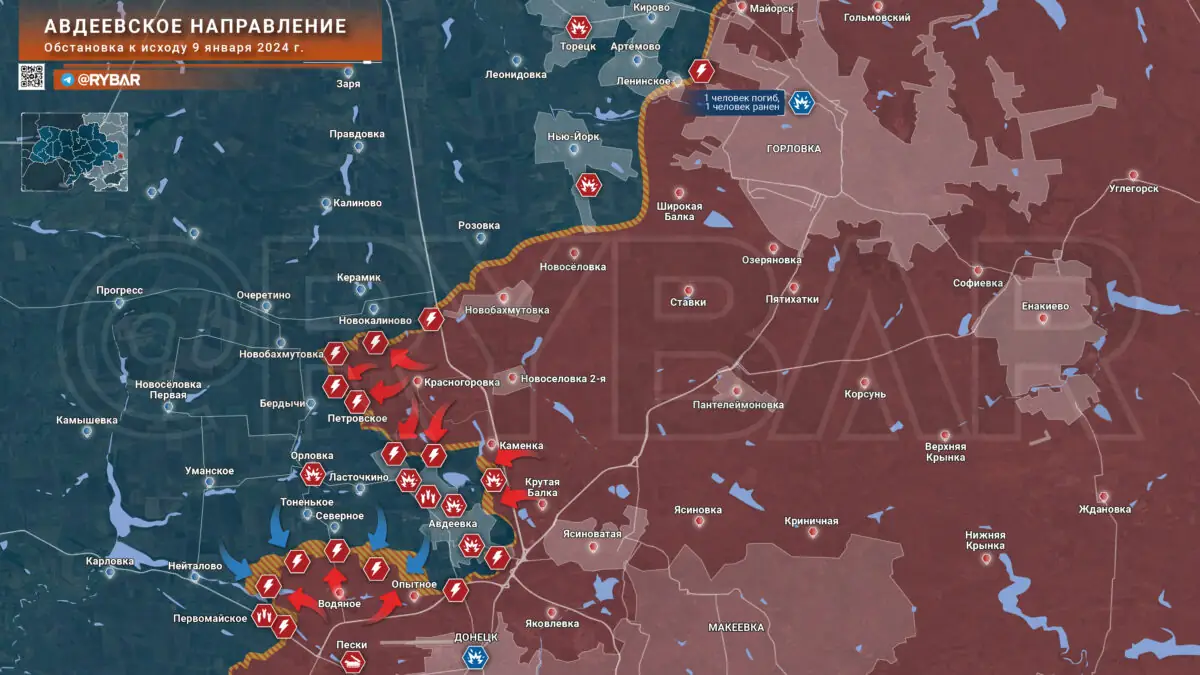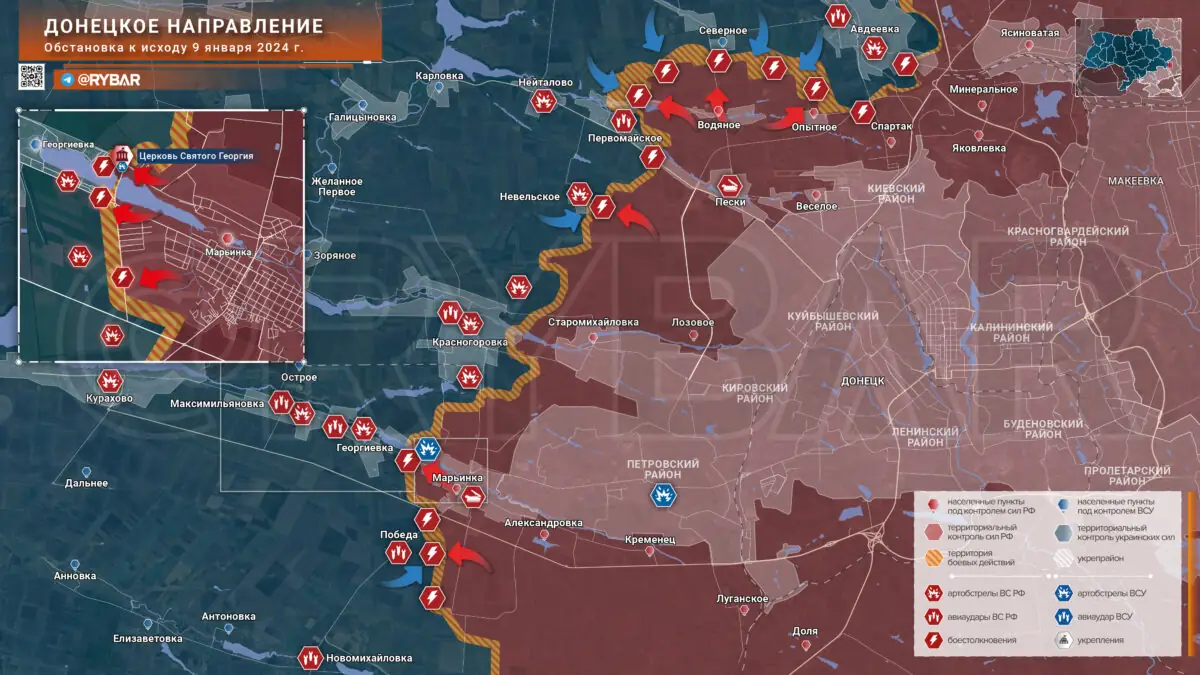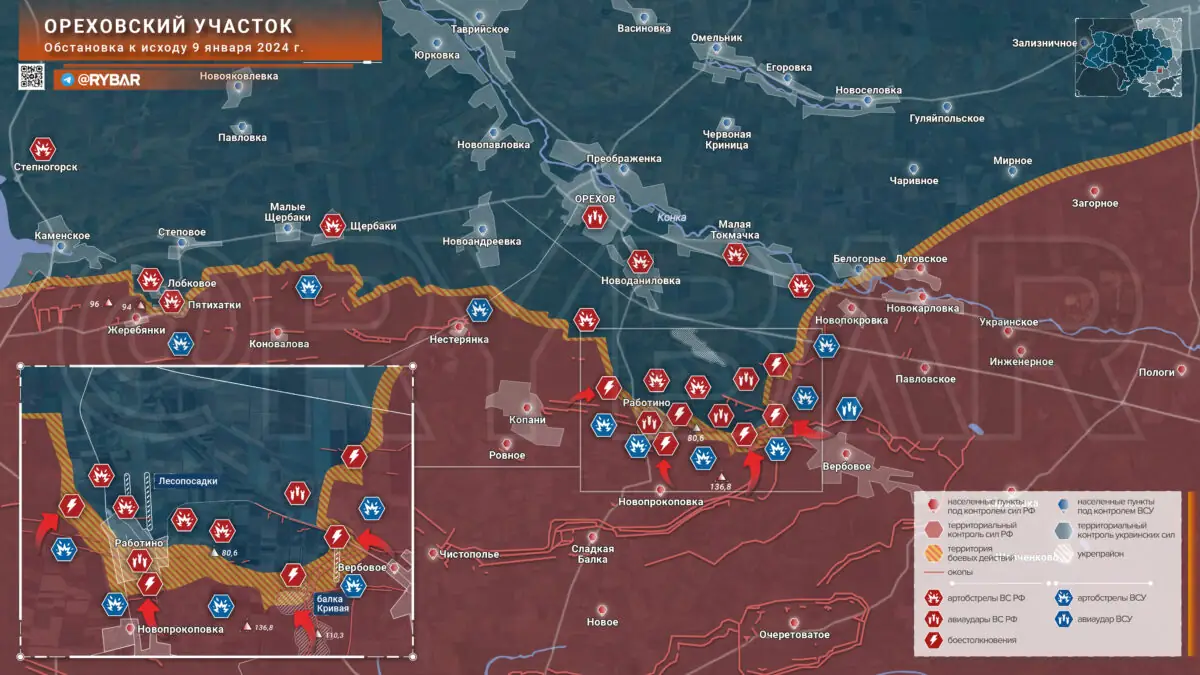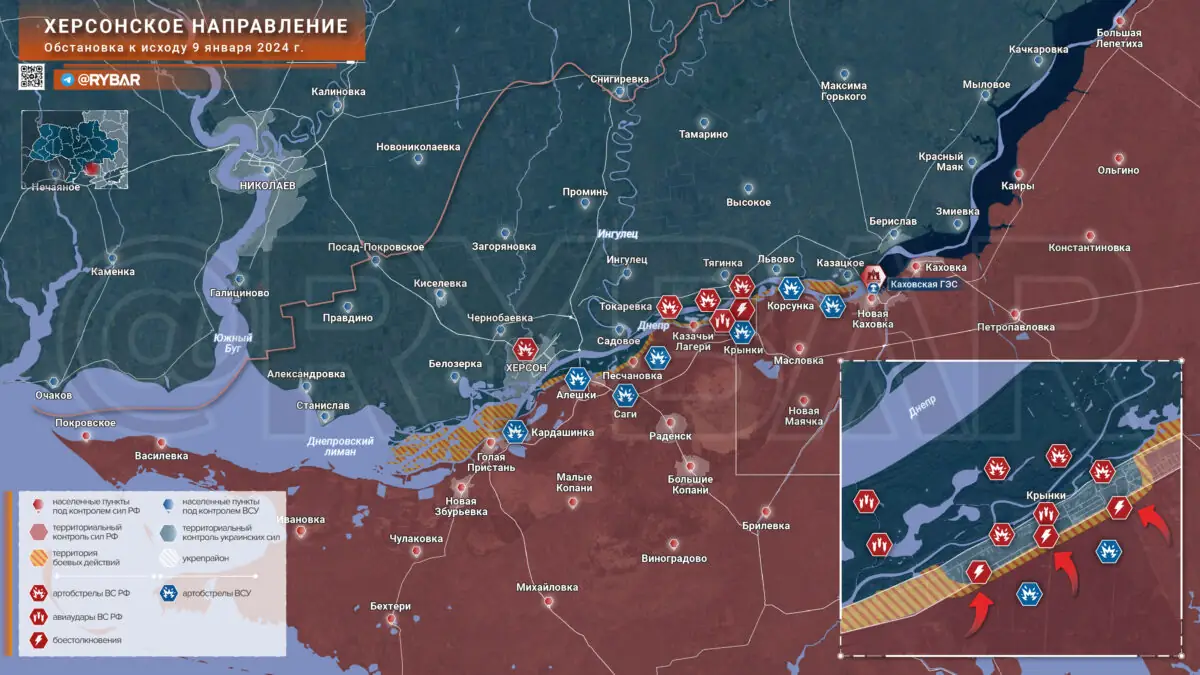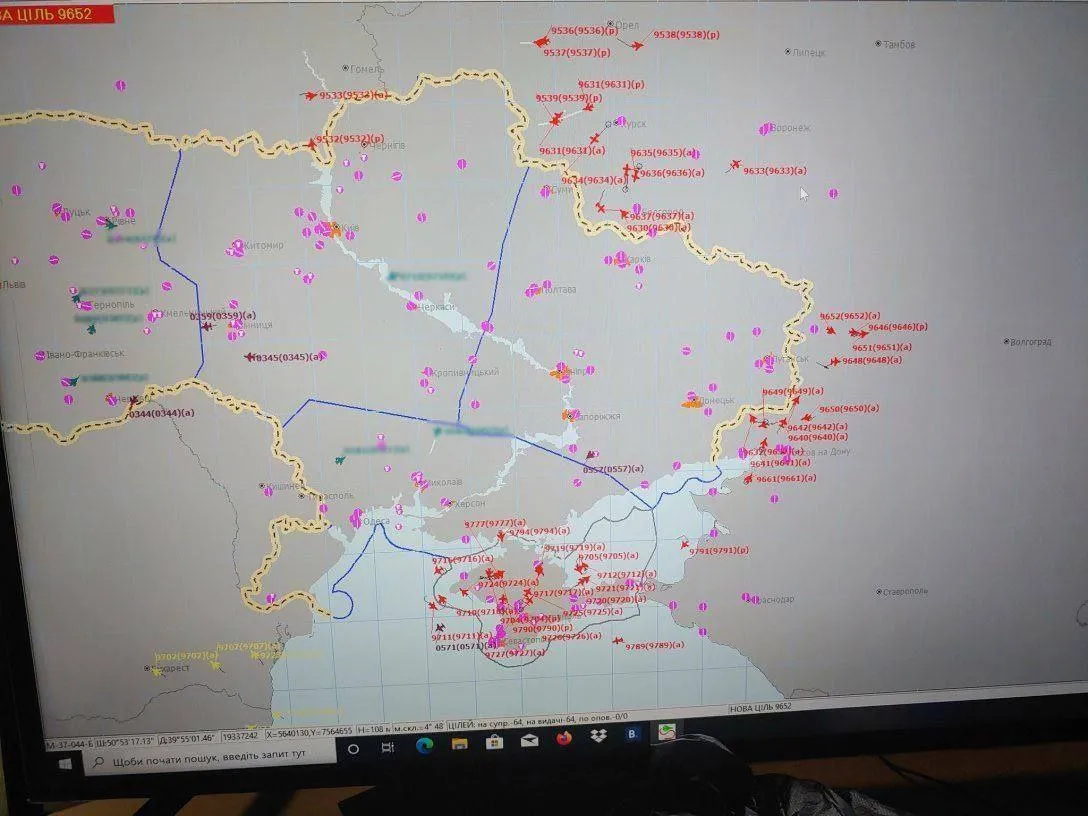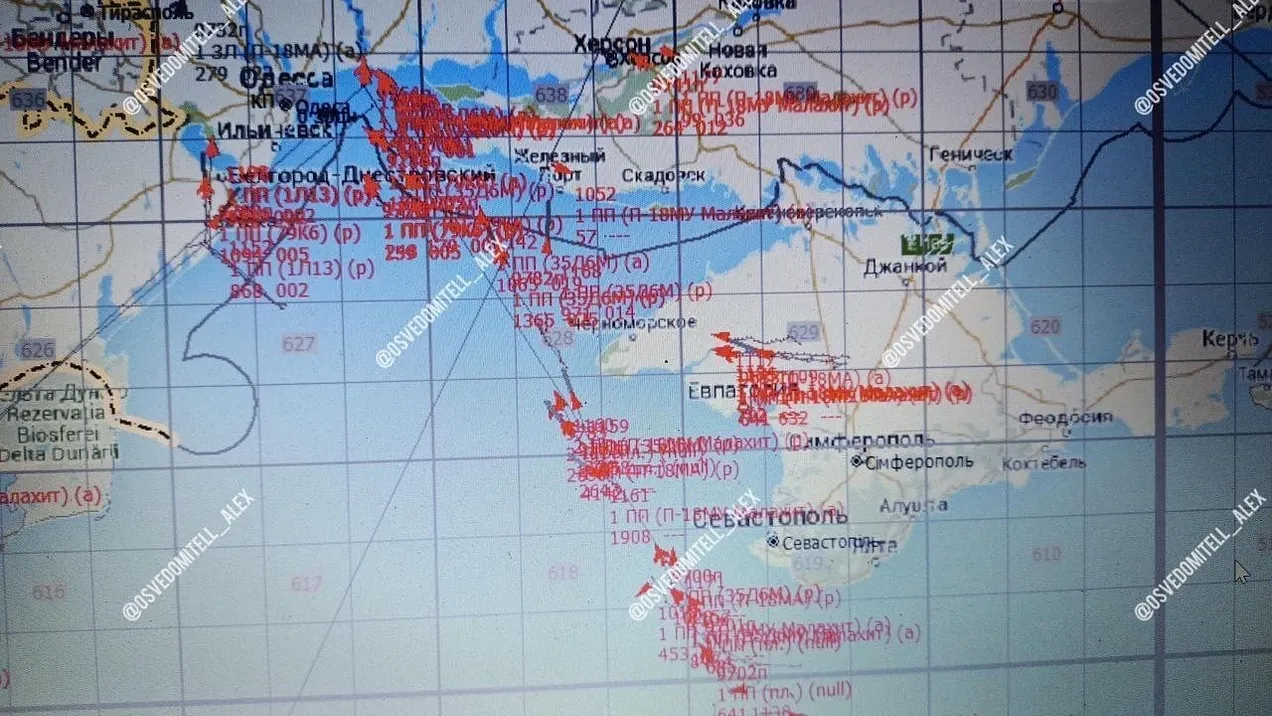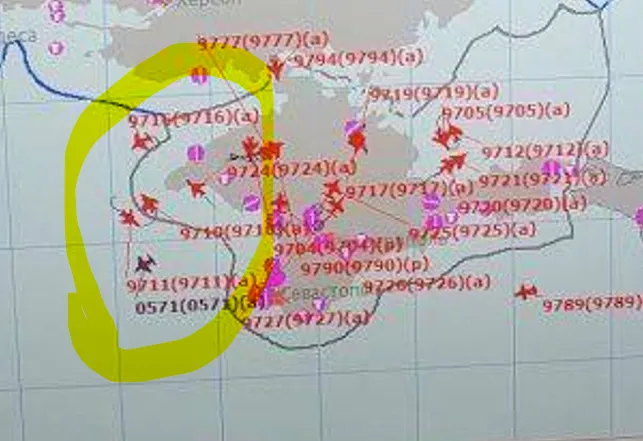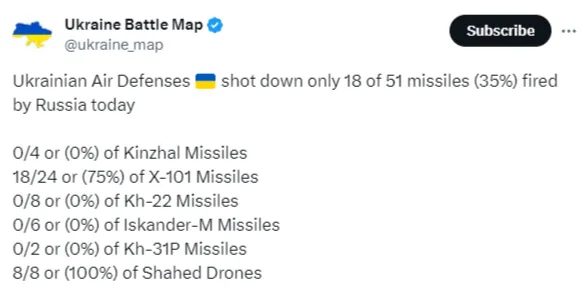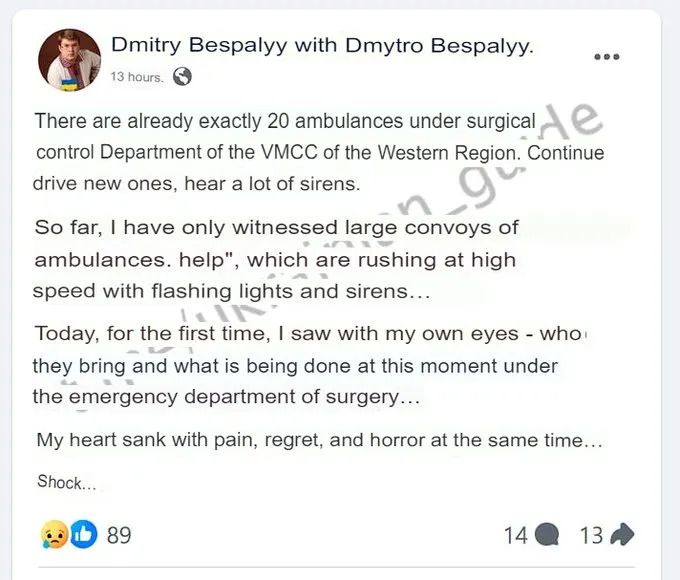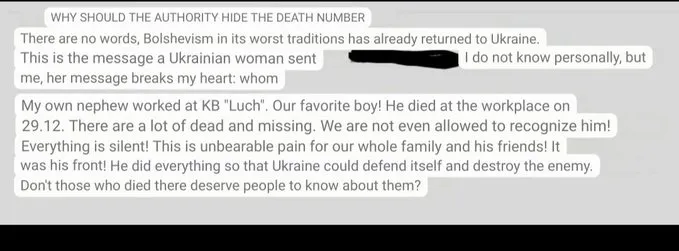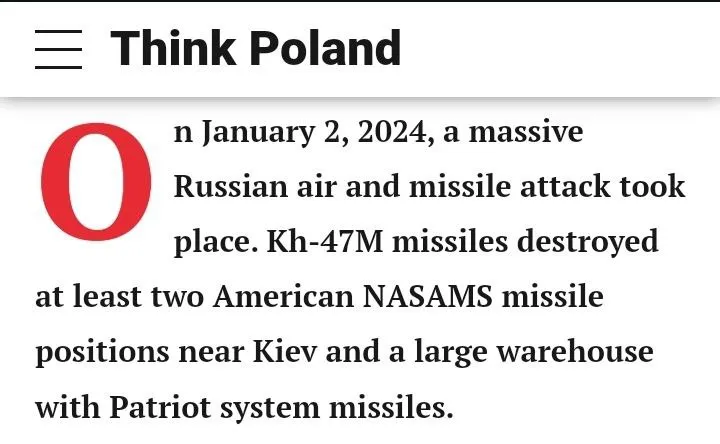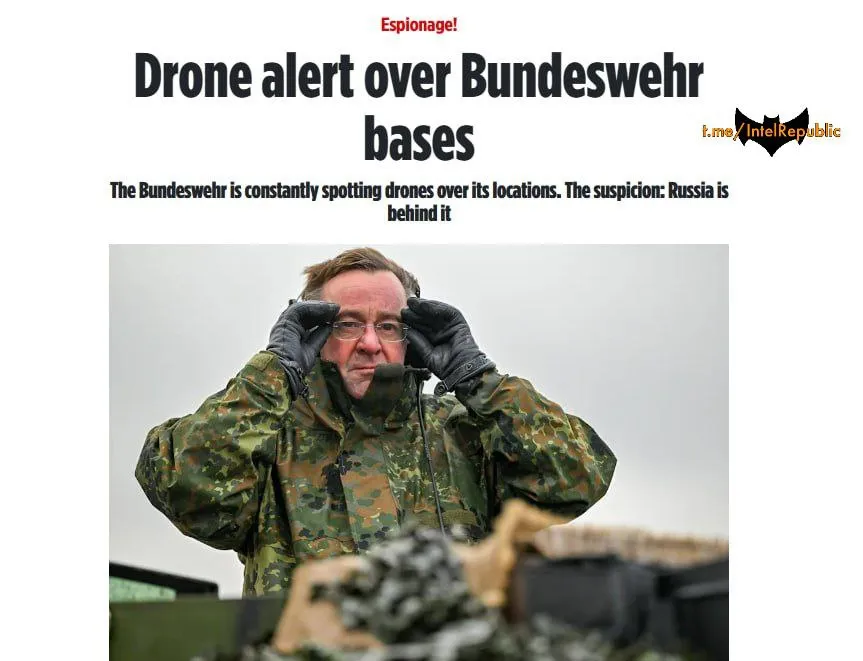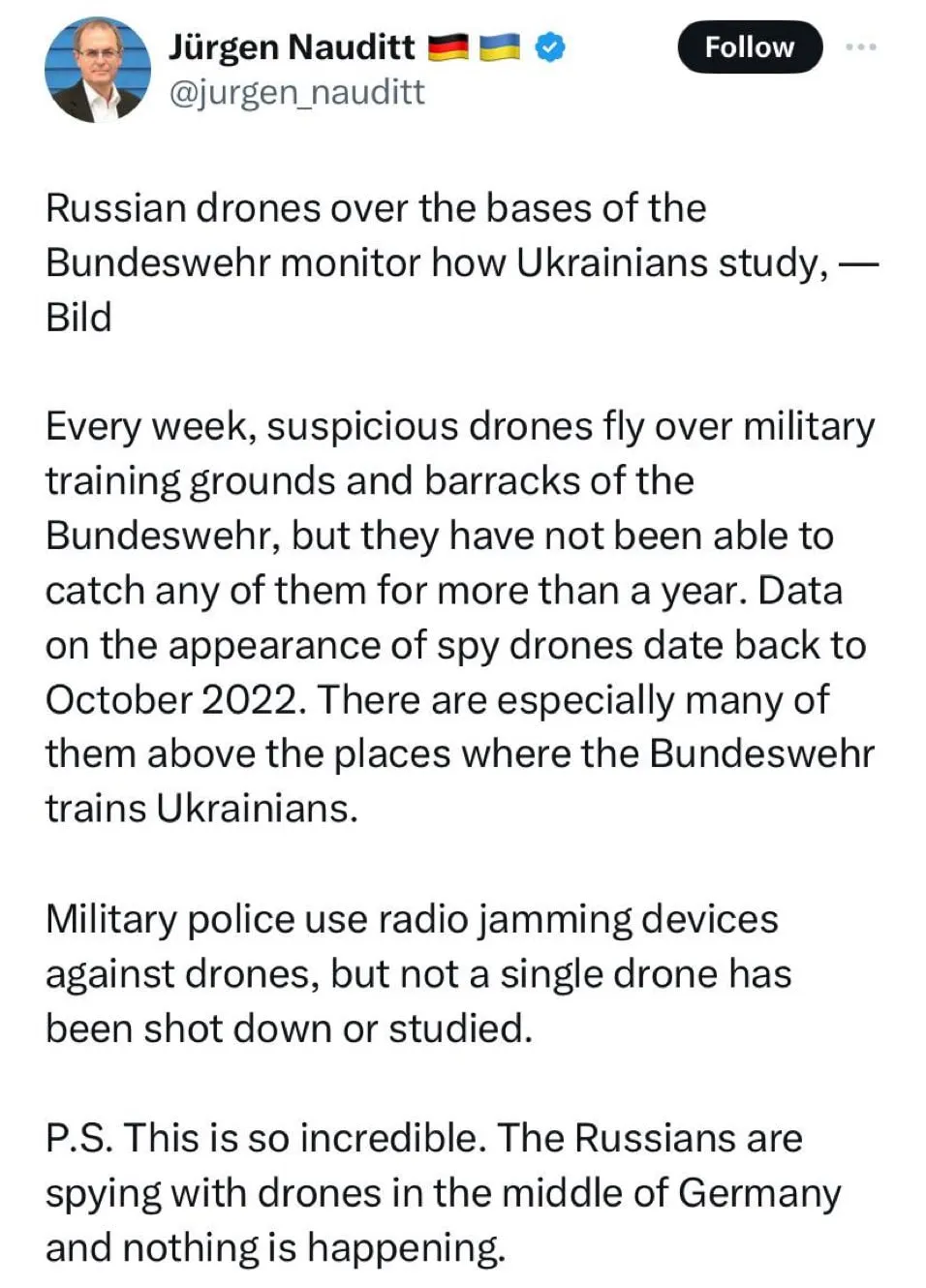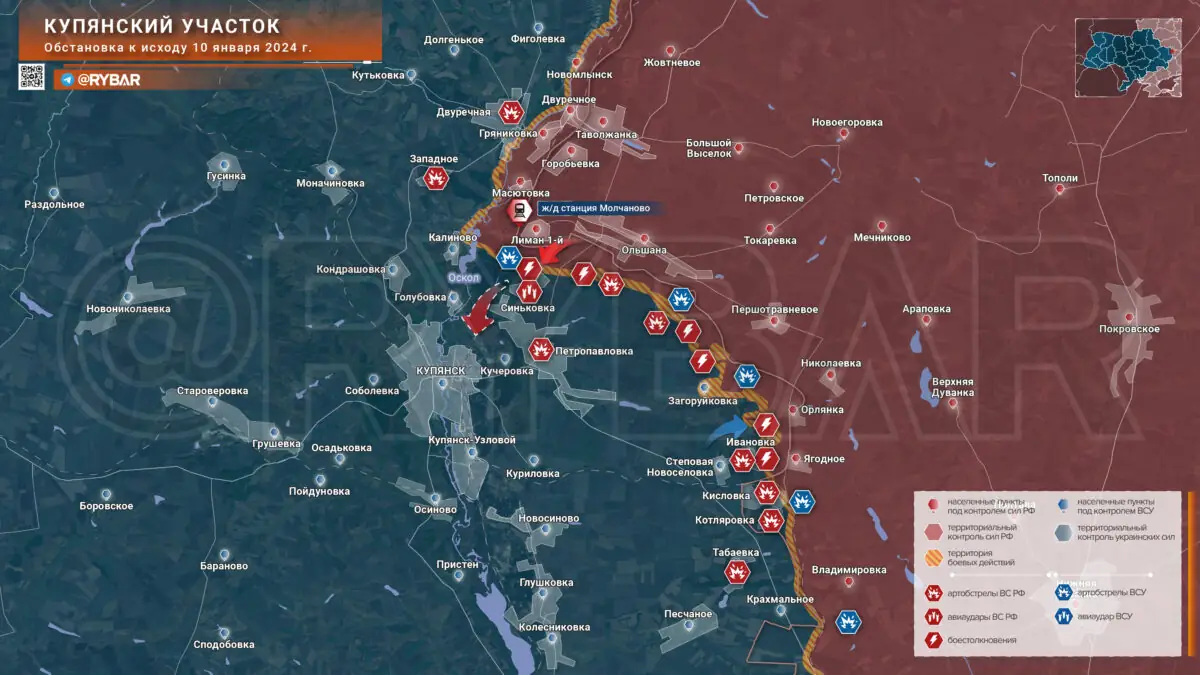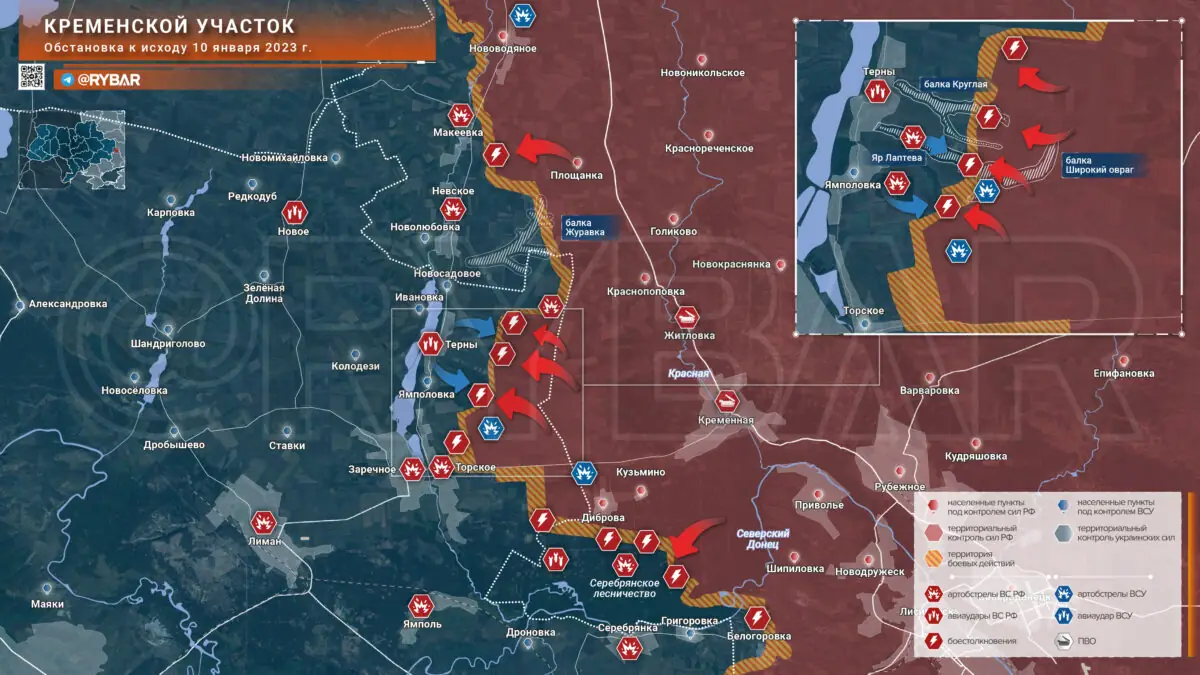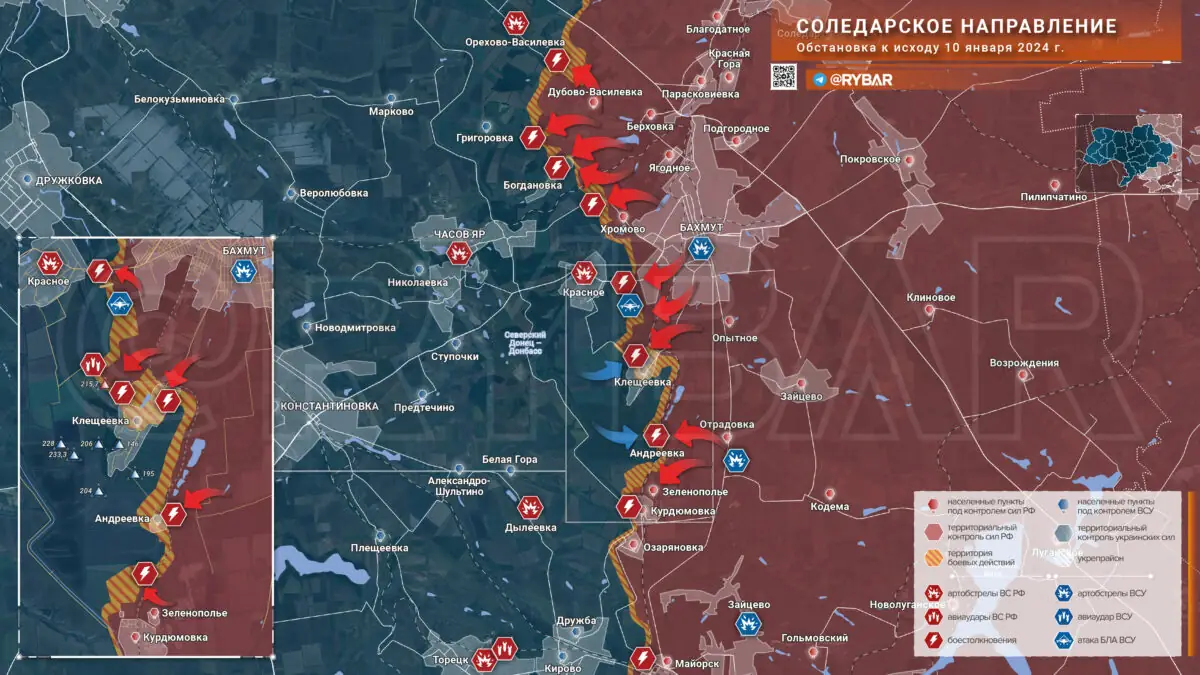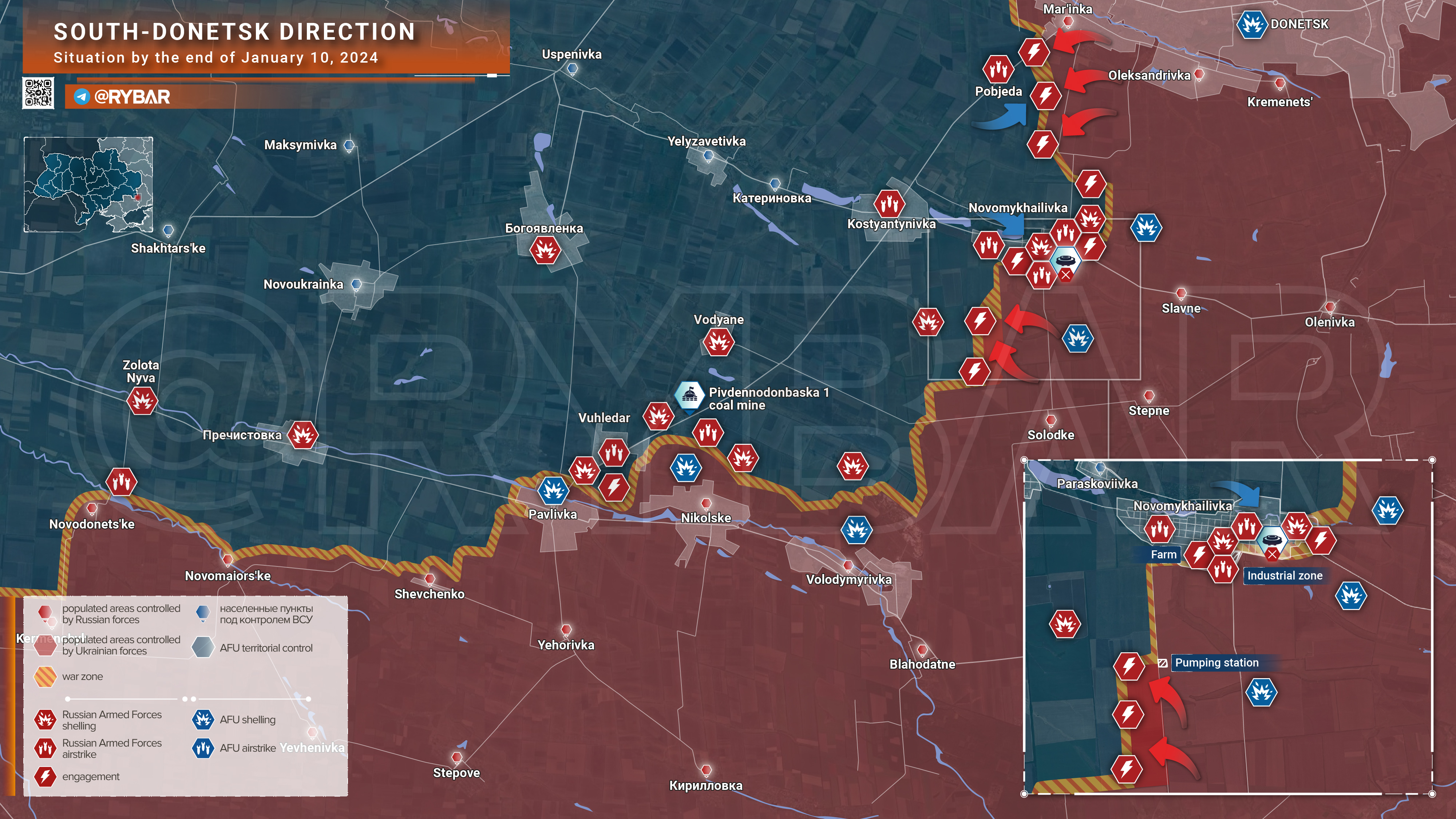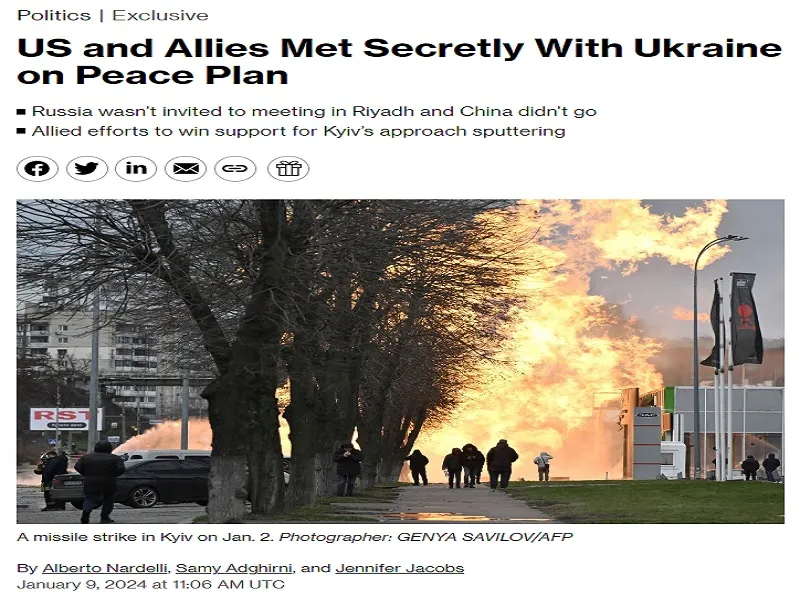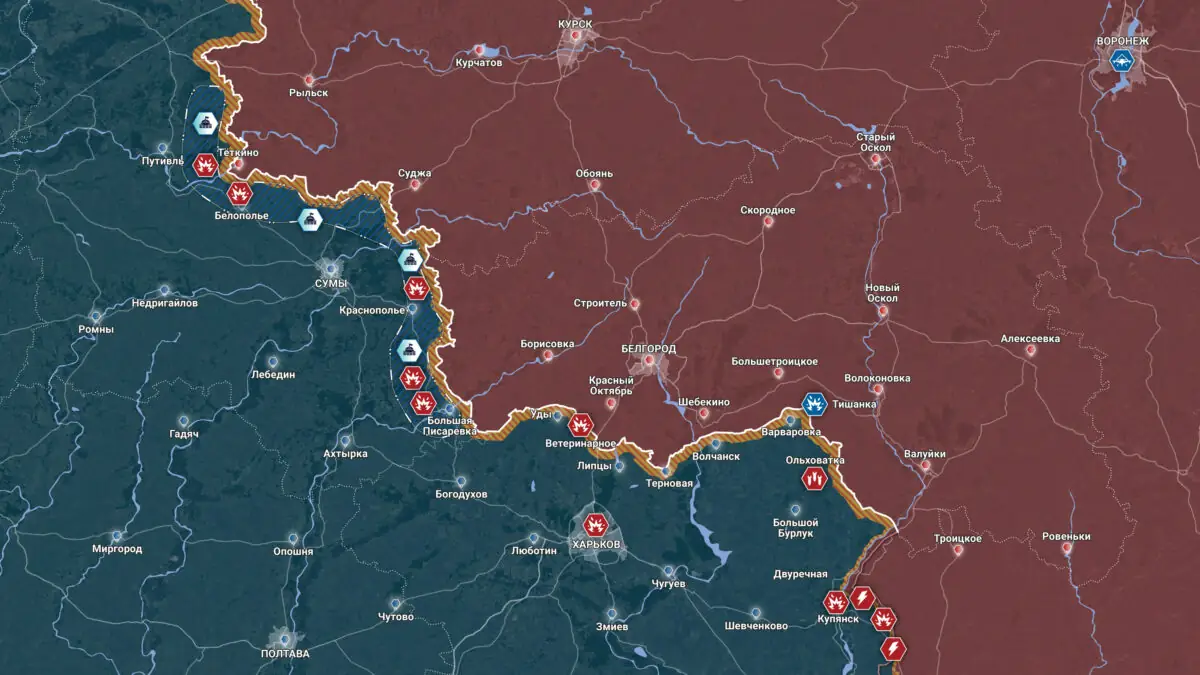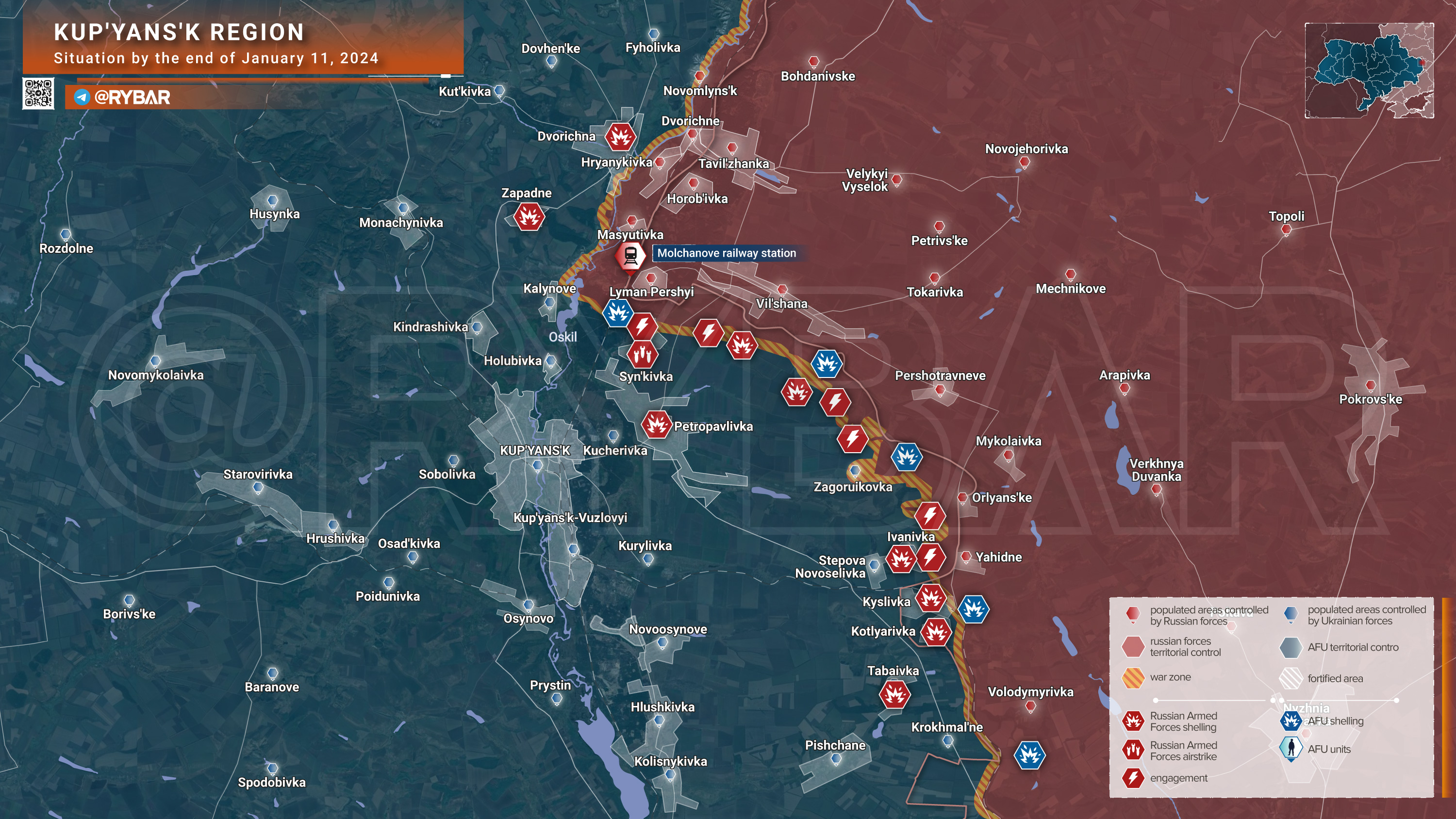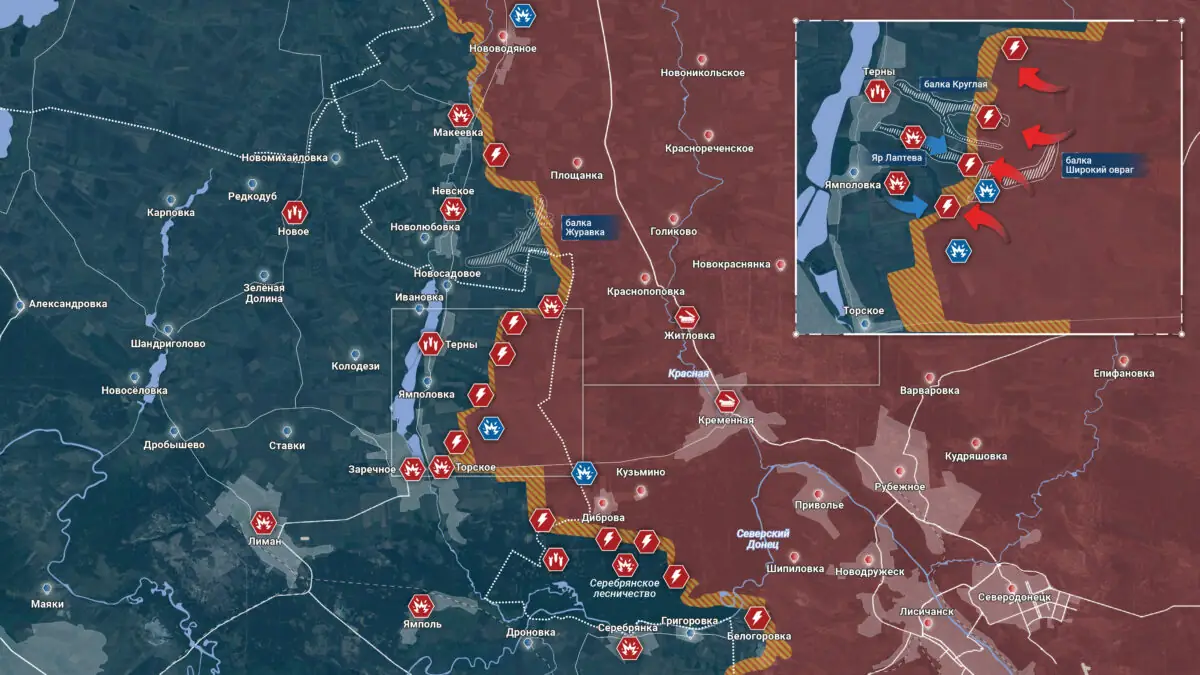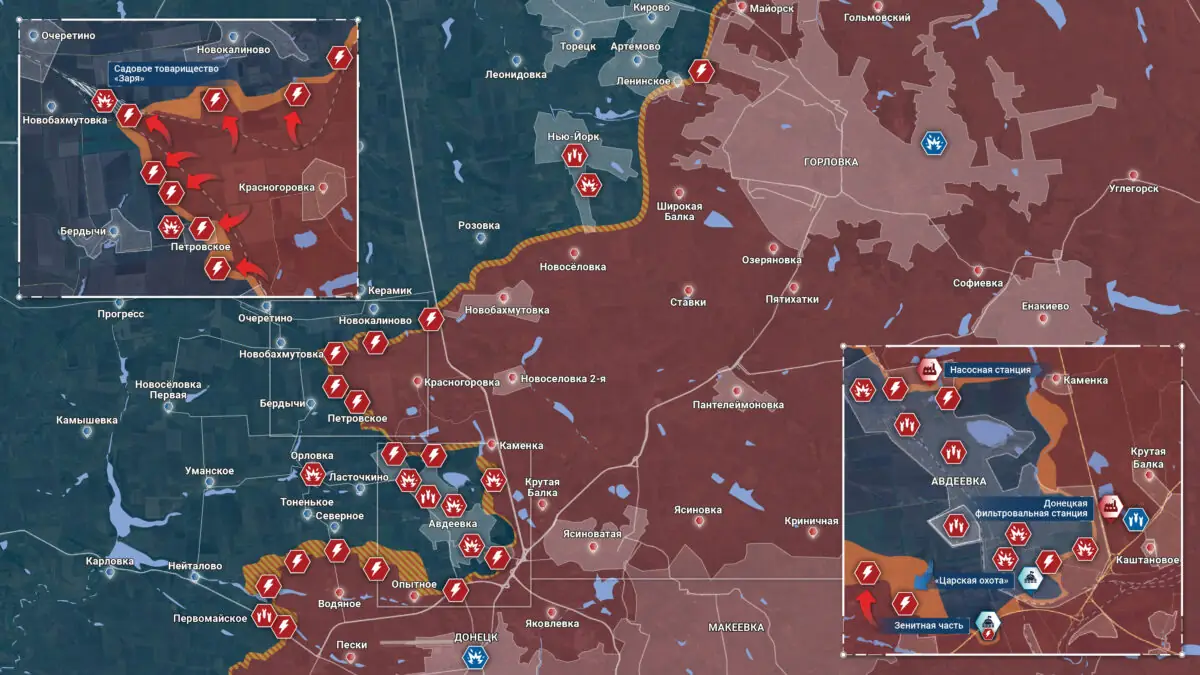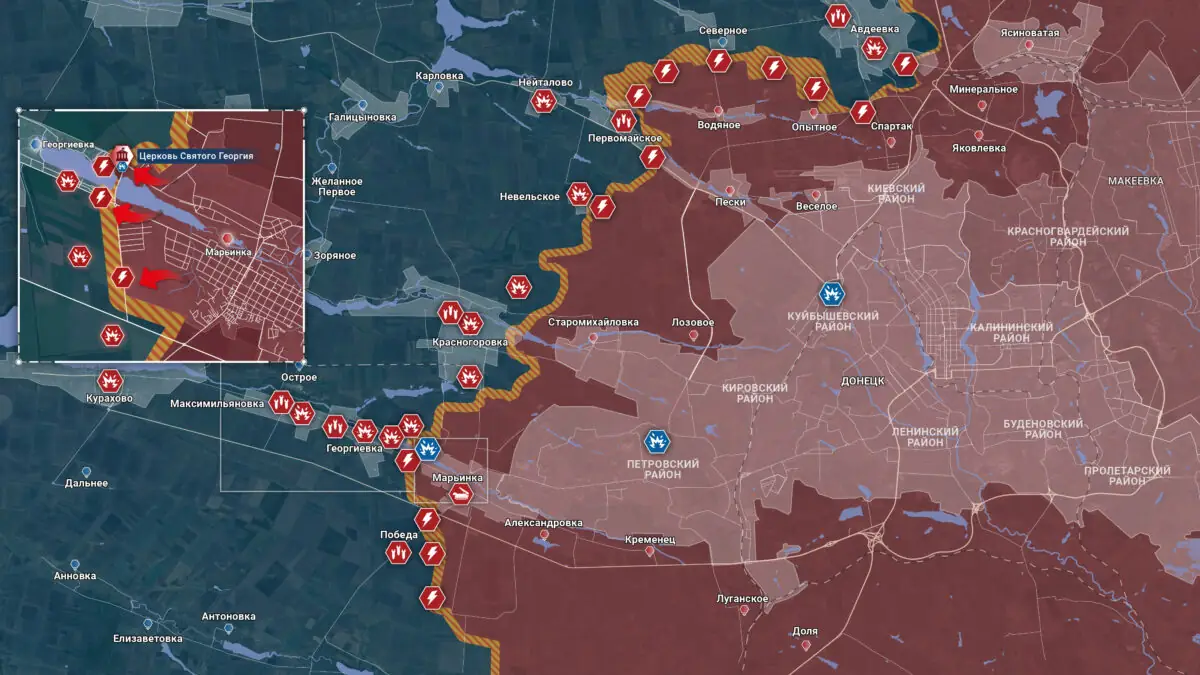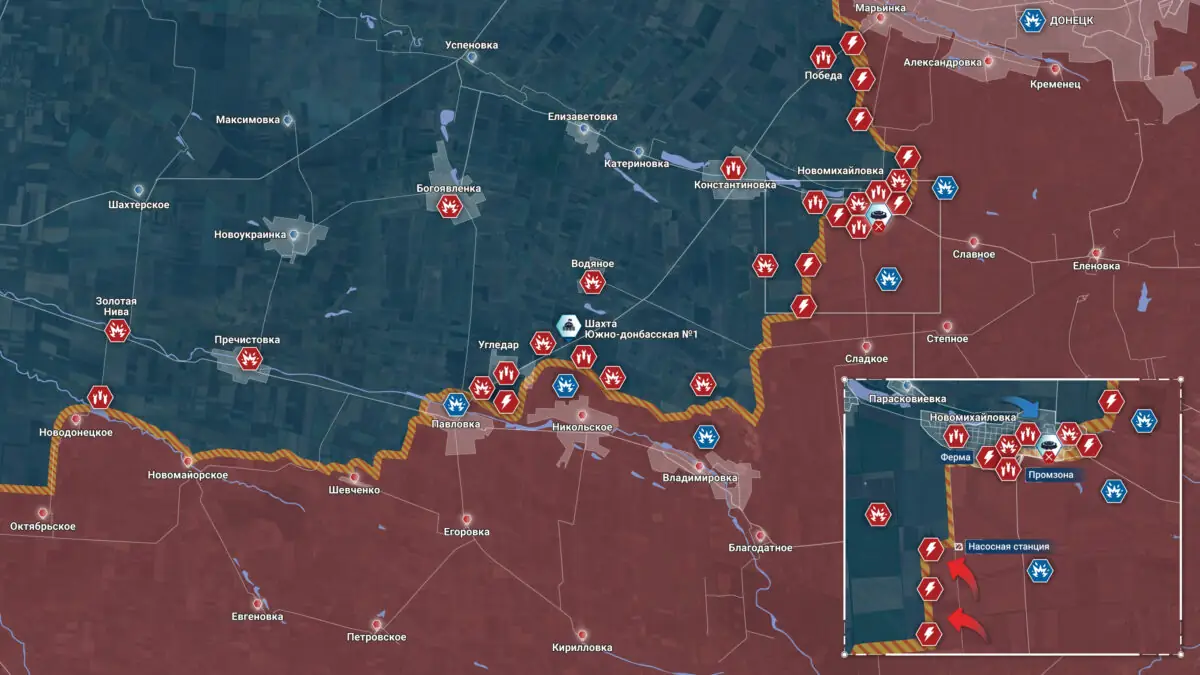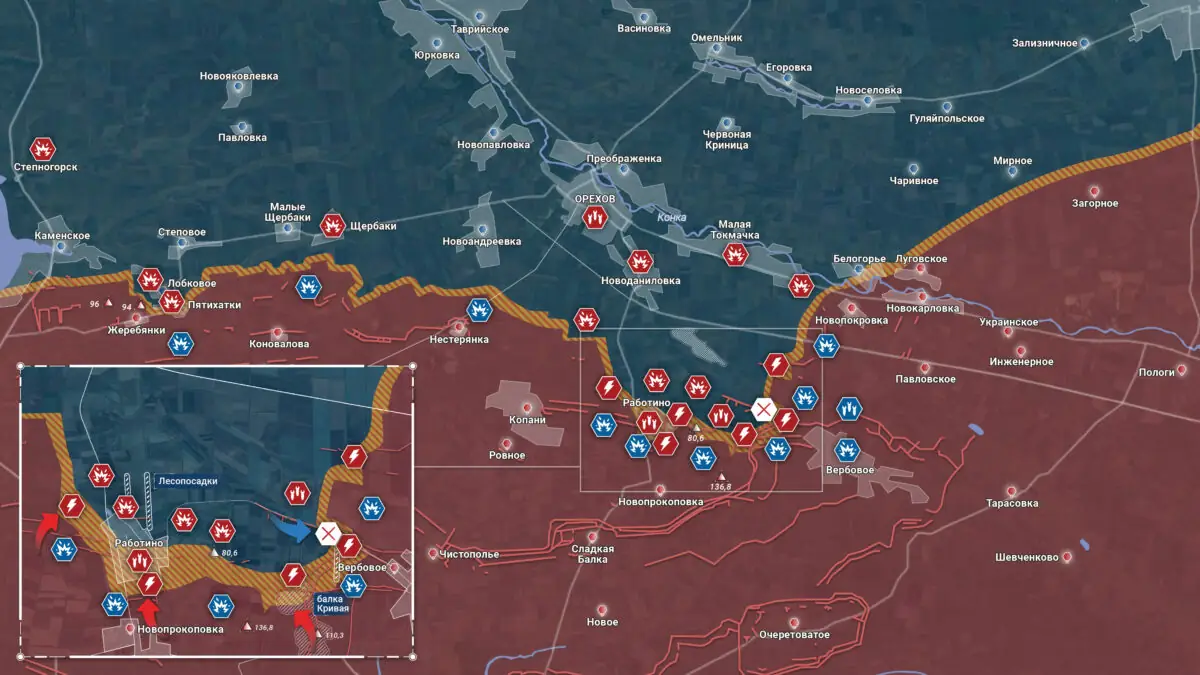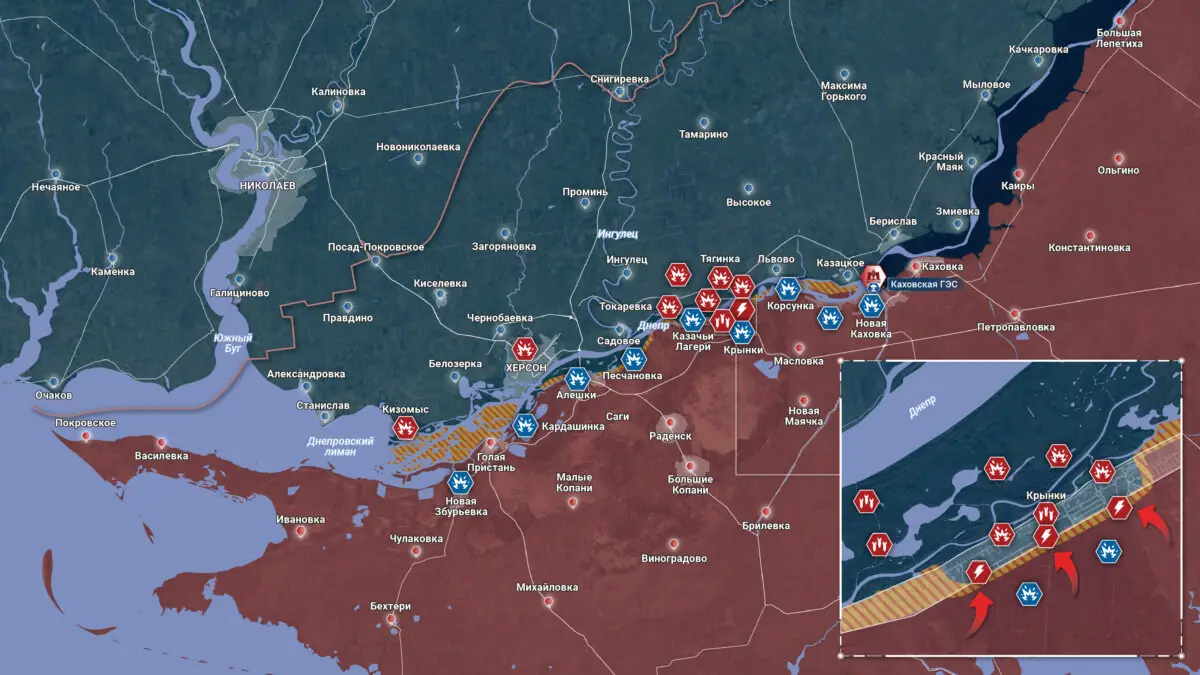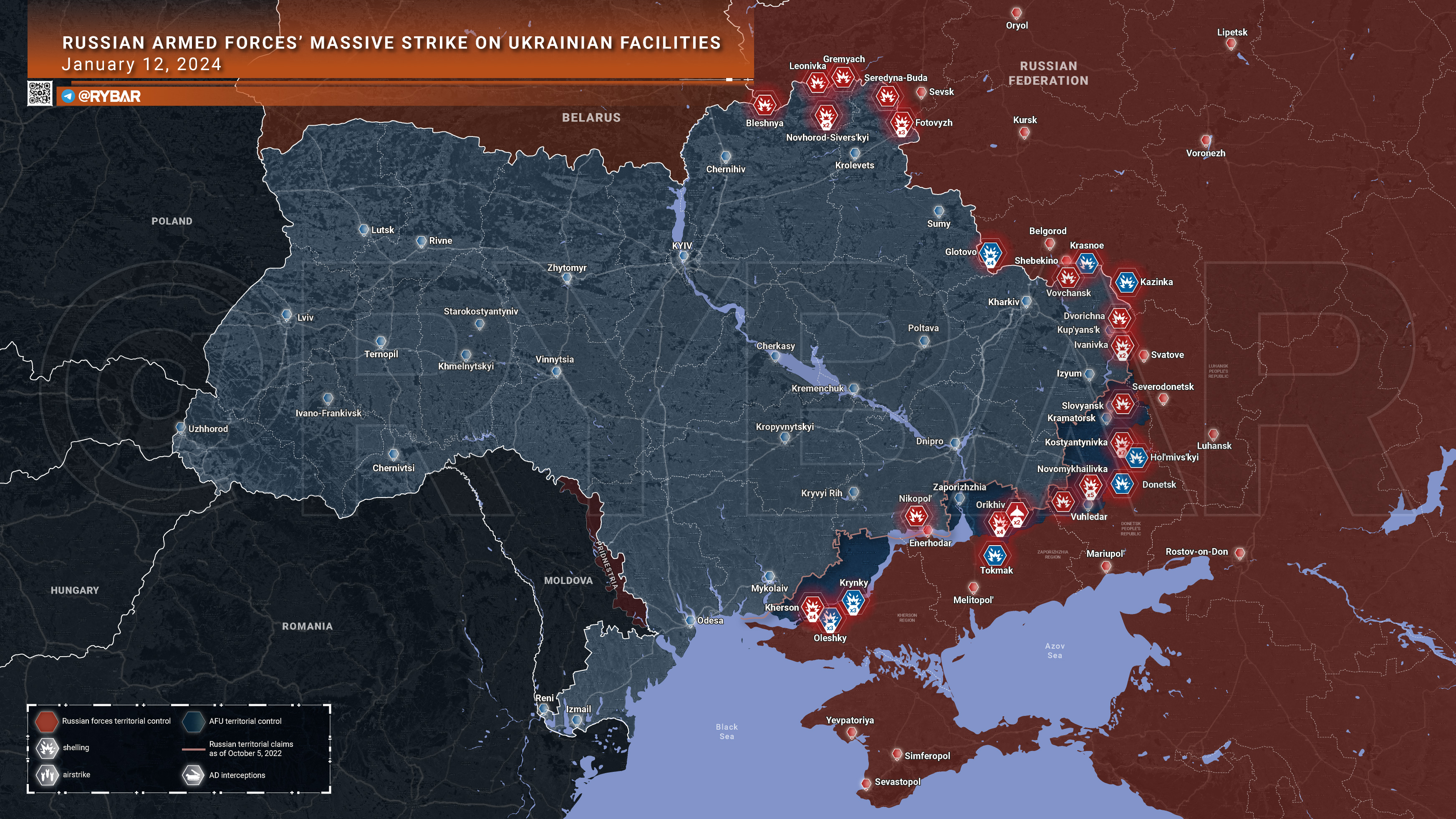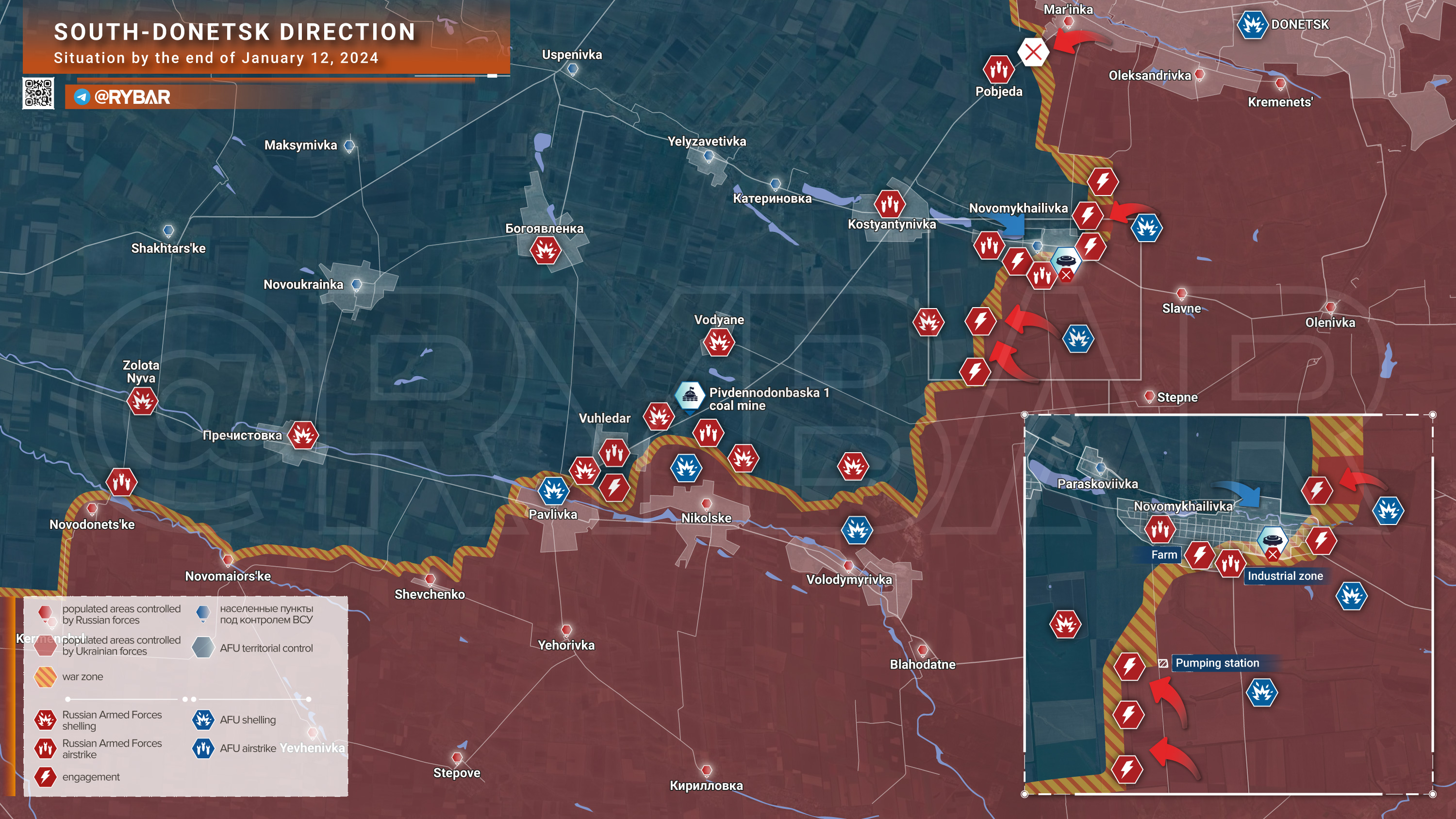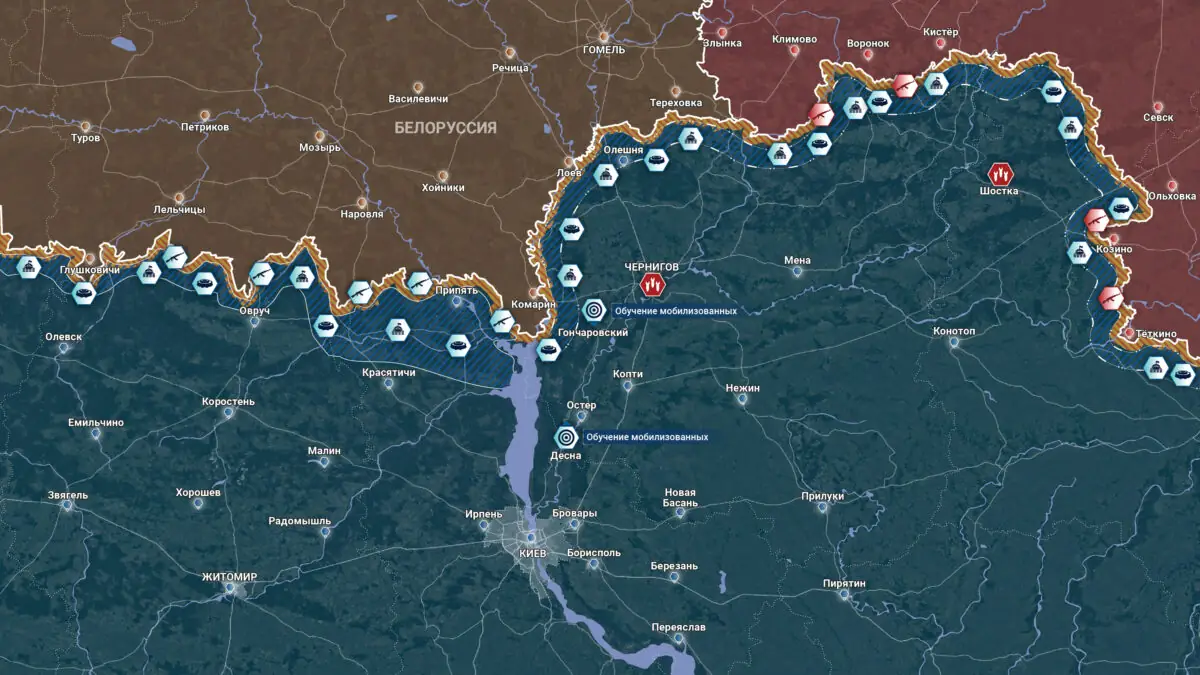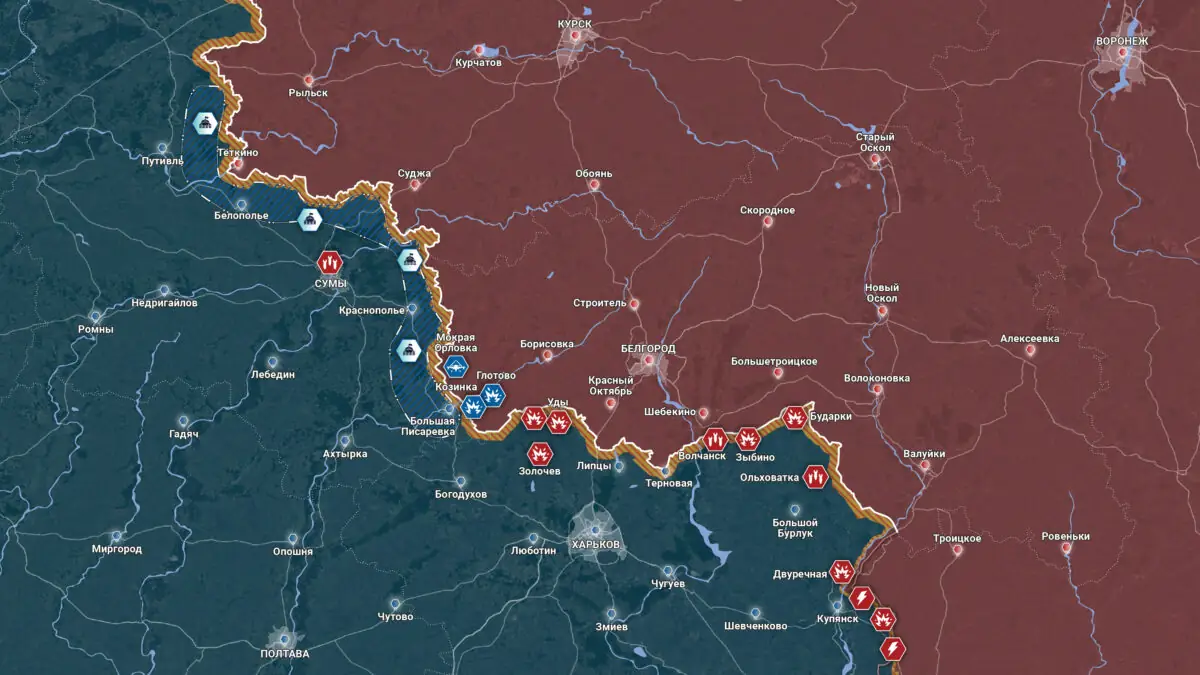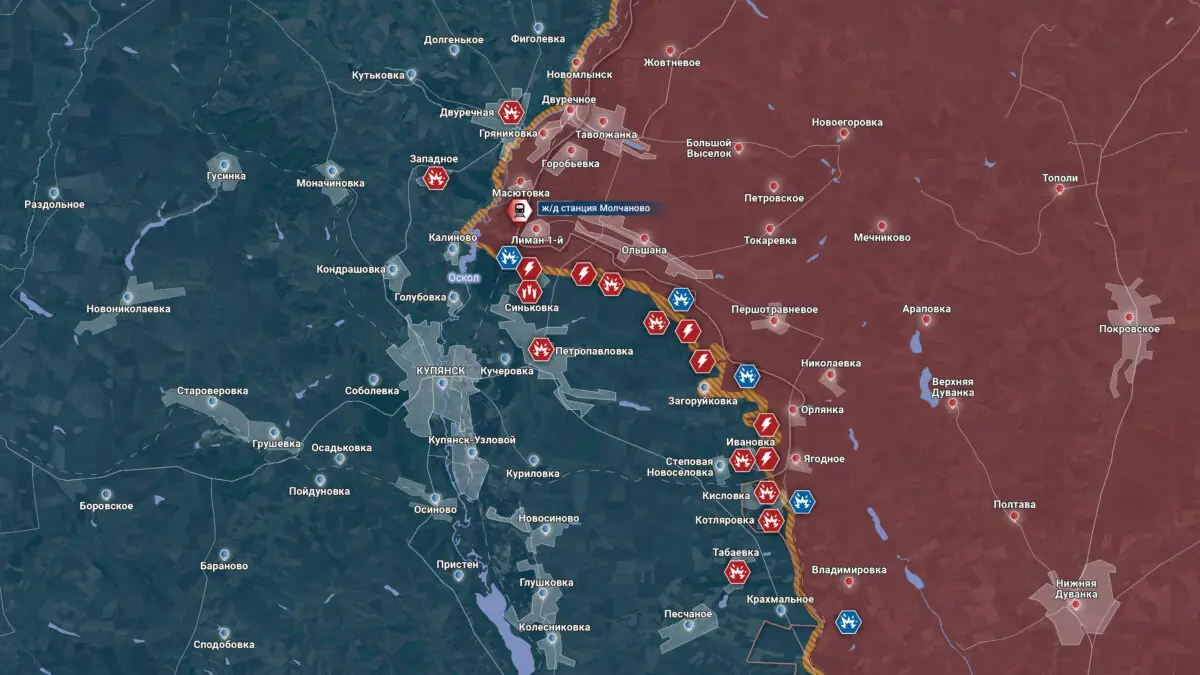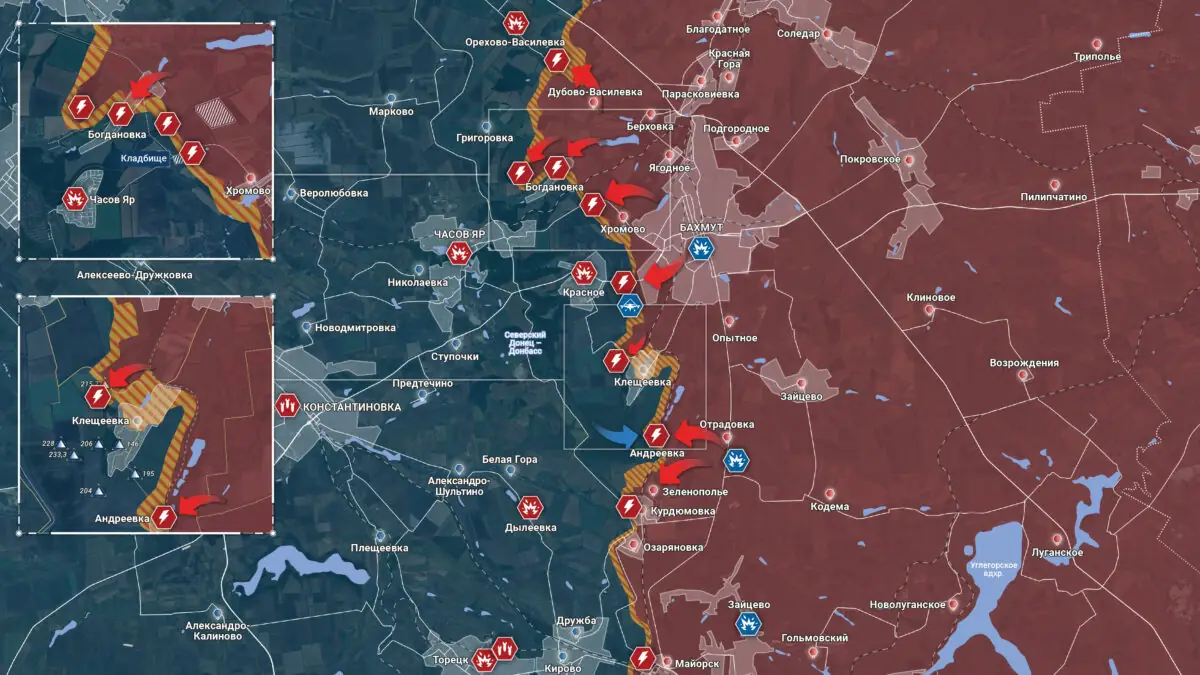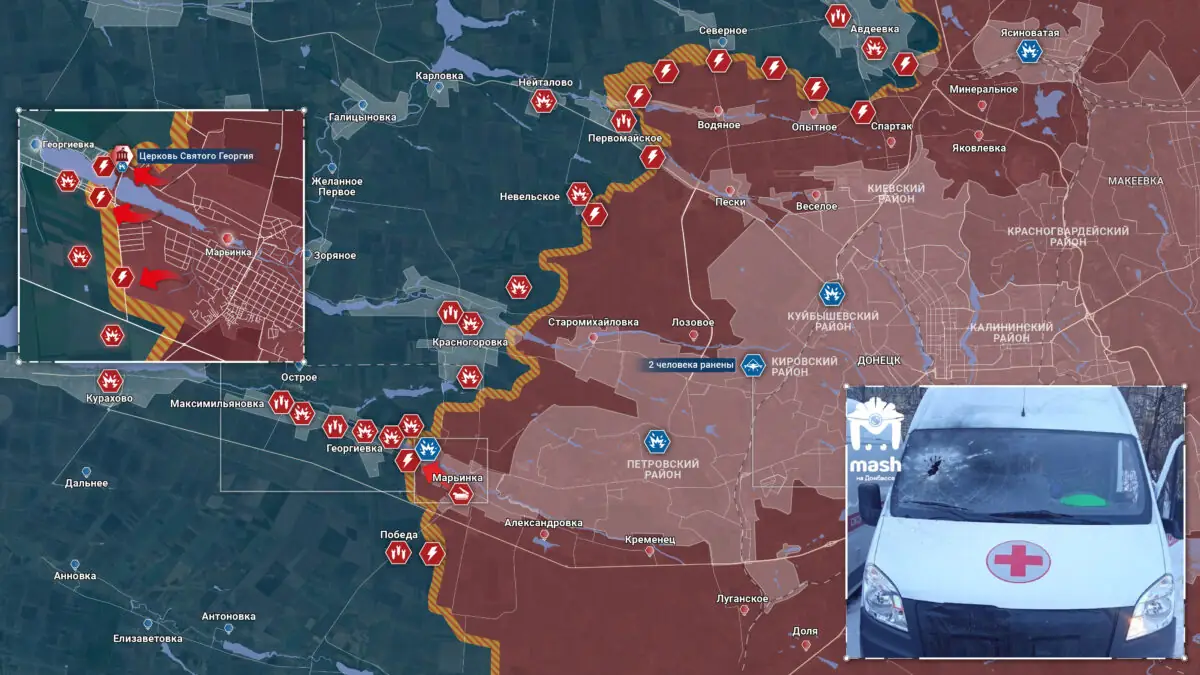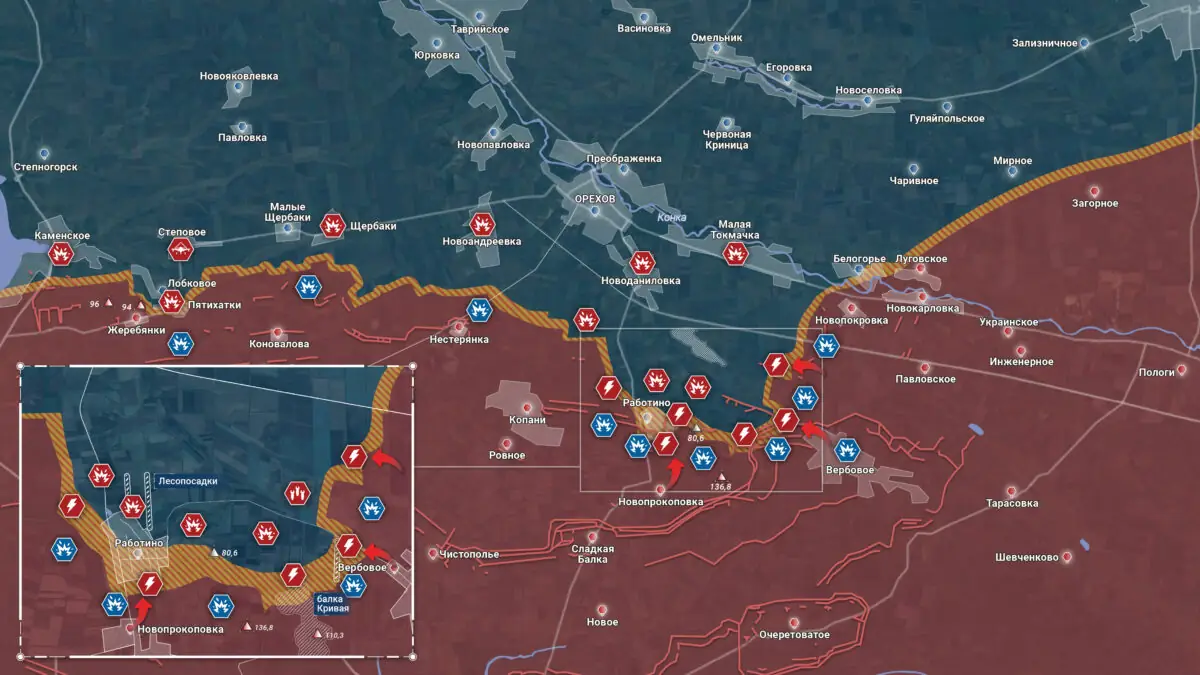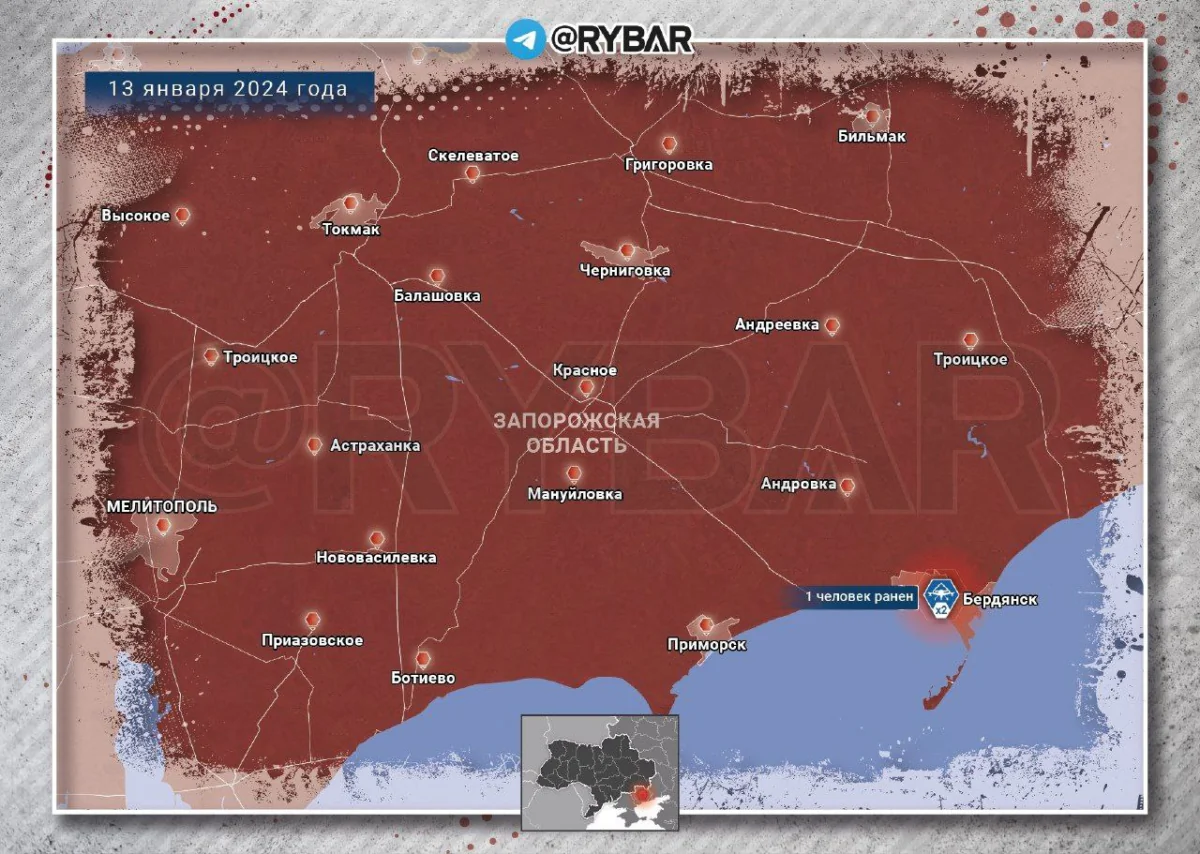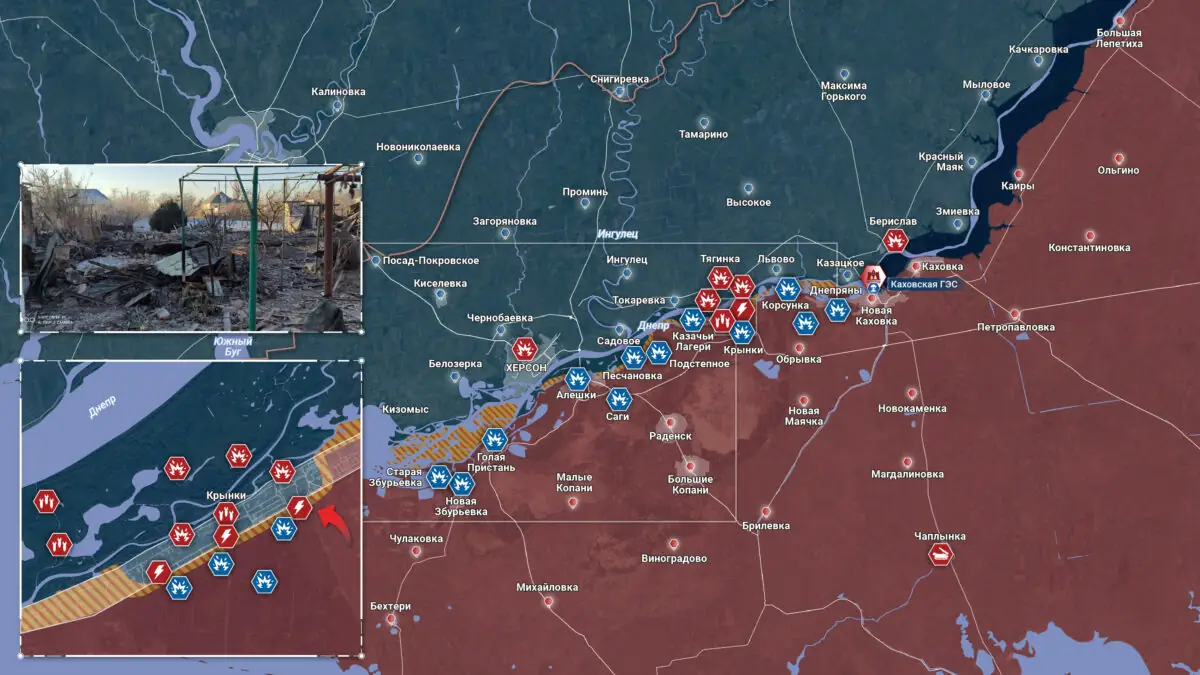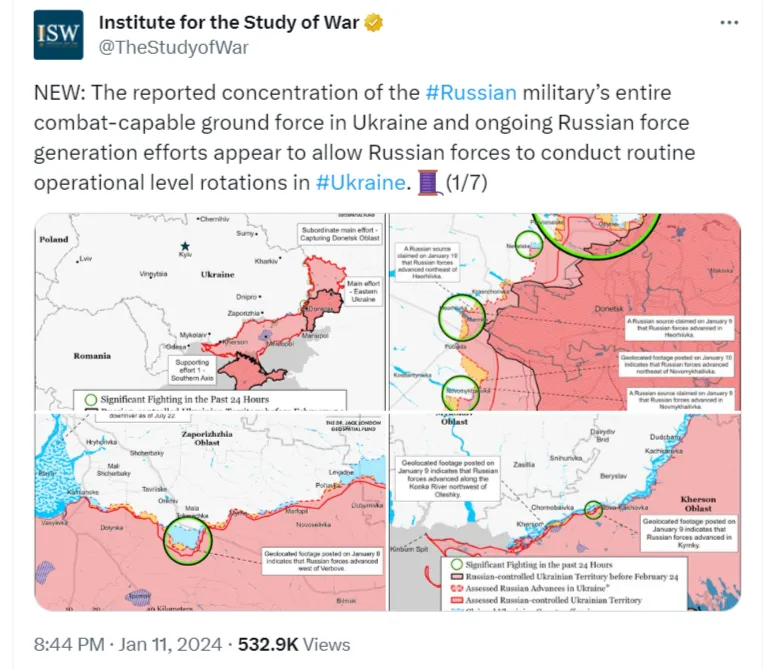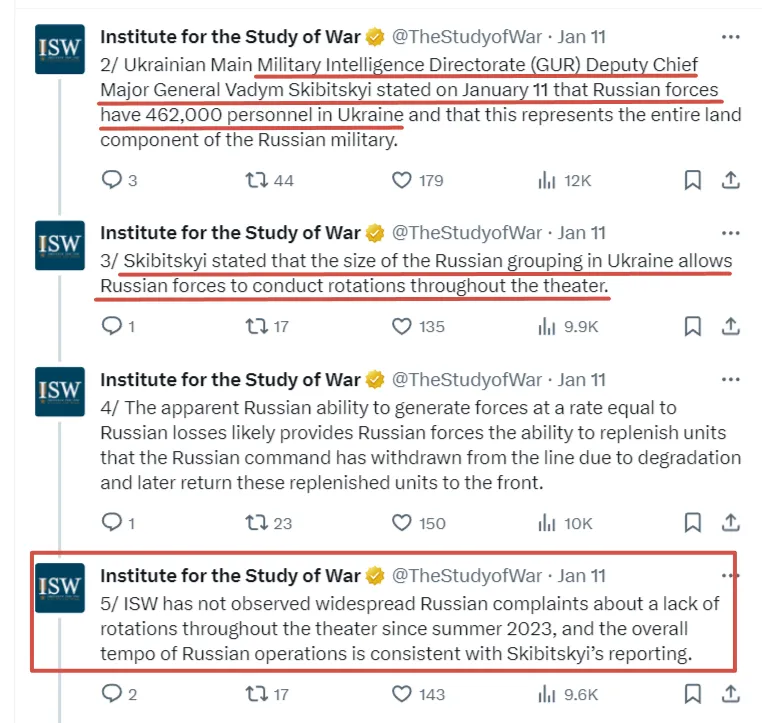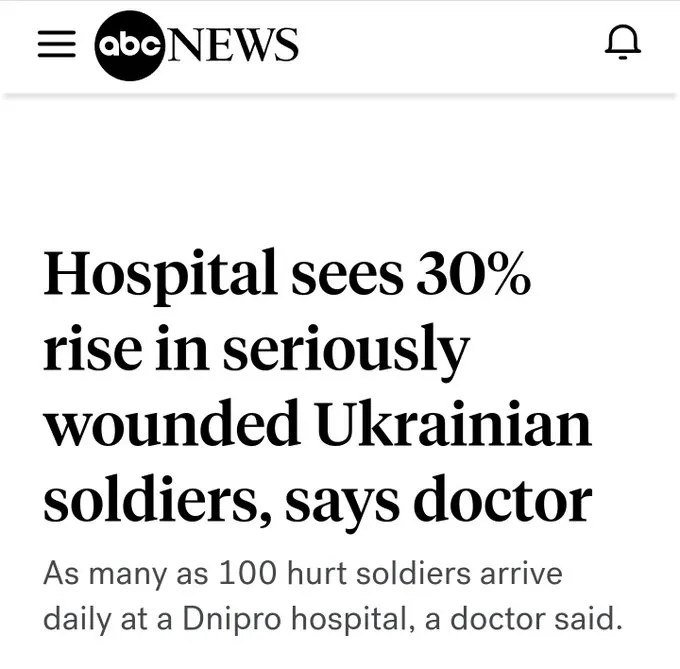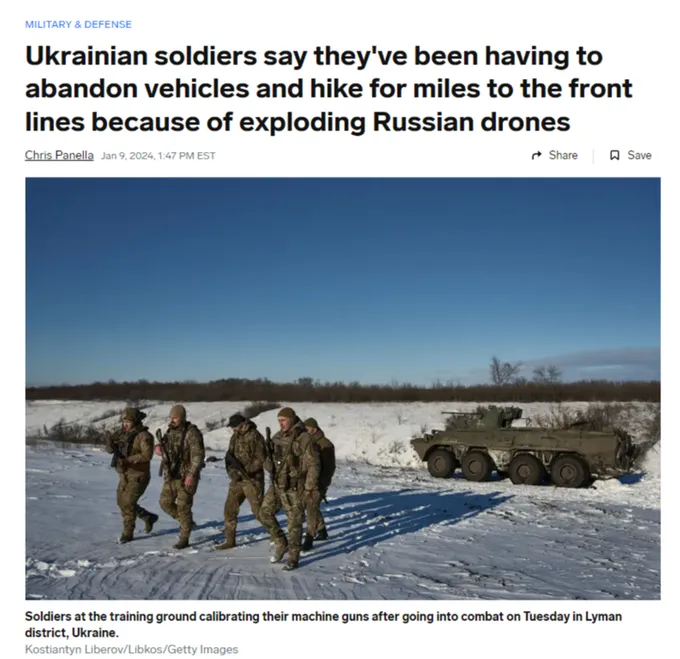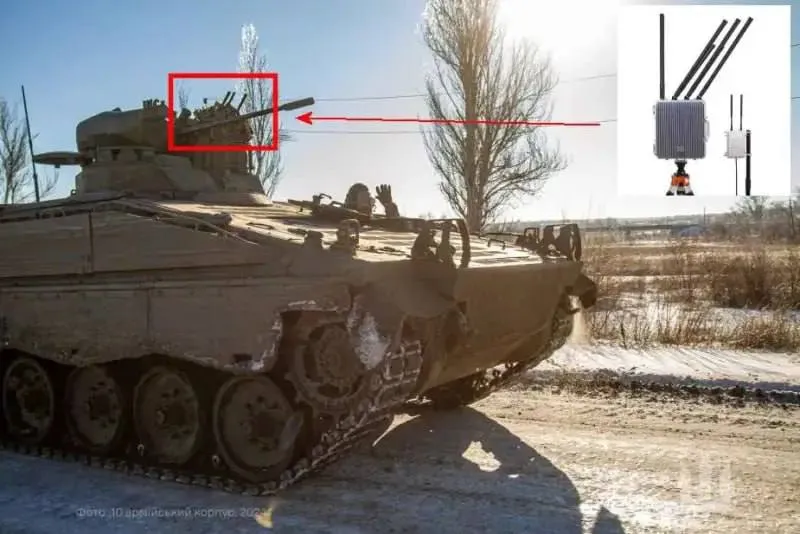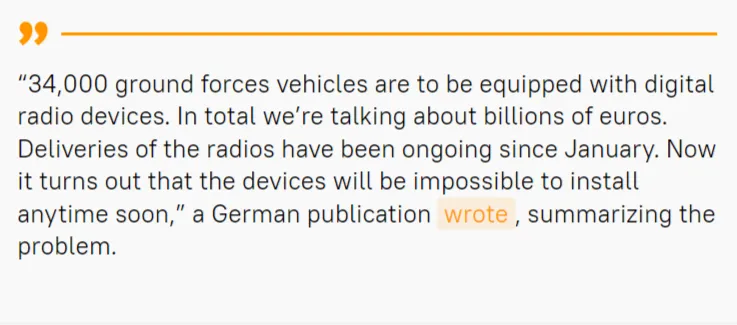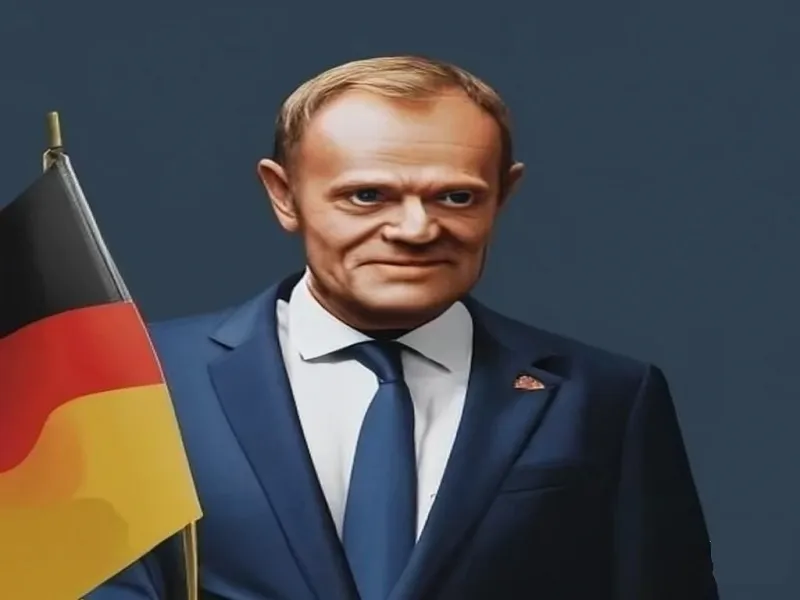POSTED BY @NSANZO ⋅ 01/05/2024

All together and following a line clearly marked by the needs on the front, the different Ukrainian authorities continue to demonstrate to reaffirm the military route as the only possible solution to the current conflict. Just a few hours after Zelensky spoke in the same terms, Dmitro Kuleba has been even clearer. “We do not have a plan B,” the leader of Ukrainian diplomacy stated in his most recent appearance in the media, adding “we trust in plan A”, that is, in continuing the war until the final defeat of Russia. Clinging to that idea that in the last twelve months has proven to be beyond Ukraine's reach, it is necessary to look for the appropriate arguments to create the conditions that make it possible to continue rejecting plan B, diplomacy, at all costs. In a defensive phase and after a failed offensive on the front -although not so much in the attempt to do damage in the rear-, Ukraine bases its speech on the unacceptable nature of negotiating with Russia, the risk of defeat and, above all, the benefit that supplier countries can obtain proxy war.
“As the Secretary General correctly said, what is given to Ukraine is not charity. It is an investment to protect NATO and protect the prosperity of the American people,” said Kuleba, addressing directly those who must approve new funds in the country that is the main military donor. Yesterday, John Kirby again reminded that the United States has already exhausted all funds available to Ukraine, so there will be no new military assistance until Congress approves a new item. In high places he is especially concerned about the provision of missiles for Ukrainian defenses. With US funds still frozen, the Russian bet is to try to destroy Ukraine's military industrial potential to the maximum.
Although it was evident with the objectives attacked in the last days of 2023, on Wednesday, the daily report of British intelligence was forced to admit it. Russia is not focusing on critical civilian infrastructure like a year ago, but on military production. And she does so now that she is aware that Ukraine's defense capacity is undermined by uncertainty about when the flow of financing will restart. And despite continuing to describe missile attacks as acts whose sole objective is to “kill the maximum possible number of civilians,” even the belligerent Mijailo Podolyak has admitted that the main difficulty for industrial production in the country is the certainty that it would be destroyed by Russian missiles. The objectives are clear, they are military and they occur at what is perhaps the moment of greatest vulnerability for Ukraine. Without being able to turn to Washington for help, other supplier countries have wanted to increase their participation in the common effort to acquire ammunition for Ukrainian defenses.
Yesterday, the same day that Kiev claimed to have surface-to-air missiles for just a few more Russian attacks, NATO's Procurement and Supply Agency said that Germany, Spain, the Netherlands and Romania had signed an agreement to acquire a thousand missiles for the American Patriots that Ukraine has. The apparent race is repeated again to see which arsenal runs out first, Russian missiles or Ukrainian anti-aircraft missiles. The Russian ability to continue producing, especially in a context of lack of financing for Ukraine, shows that it is Moscow that has the advantage in this winter duel. In this context, the ammunition acquired by these four NATO members represents a contribution that is unlikely to change the course of the battle for the skies over Ukraine.
With war as the only option and the benefit of NATO countries as the main argument, many think-tank analysts linked to the field of security and military industry seek to amplify the need, not only to continue with the supply that occurred in 2023, but to increase it. Ukraine's enormous needs for weapons and ammunition mean that these individual contributions from a number of countries are nothing more than a drop in what those who defend this option understand must be an ocean of financing and resources.
Although the mainstream media periodically broadcast analyzes on the importance of continuing to maintain the State and Armed Forces of Ukraine, the article published this week by Foreign Affairs , an influential magazine in the US foreign policy establishment , is especially detailed on the causes of failure. of the Ukrainian offensive, the reasons for continuing to insist on preparing new attack actions and Ukraine's needs to achieve it.
To begin with, Jack Watling, with a long history within the apparatus of organizations linked to the security and military sector, makes it clear that Ukraine needs time. One of the reasons for the failure of the Zaporozhie operation is, in his opinion, the poor training that the units have received in the hasty courses carried out in NATO countries. Hence, it only focuses on local offensives to maintain tension and prevent deep Russian advances - the equivalent of the "active defense" that Russia has carried out during the months in which it has prepared for the Ukrainian Zaporozhie operation - in looking for time to prepare next big actions. This future does not only involve giving Western countries time to train the Ukrainian brigades, but above all to produce and gather the massive quantities of weapons that the war foresees will require. The case of artillery is the clearest, with estimates according to which Ukraine would require 2.4 million rounds of ammunition per year, Watling openly admits that the American and European industry would be able to provide only half that amount this year. .
But the problems are not limited to artillery production. “To regenerate its offensive capabilities and defend itself against Russian attacks, Ukraine will need approximately 1,800 barrels of spare artillery per year. The handful of existing howitzers in Europe cannot meet this demand. The numerous fleets of vehicles gifted to kyiv over the past two years also require a continuous supply of spare parts. Air defense interceptors will also be a persistent need: Russia currently produces more than 100 ballistic and cruise missiles and 300 attack drones a month. To contain the damage from these weapons, Ukraine will need replenishments of Western air defense systems,” insists the article, which gives only a few glimpses of the enormous quantities of weapons that kyiv would need each year to continue the war.
The logical conclusion, taking into account Ukraine's inability to produce its own material and the industrial deficiencies of Western powers to maintain a high-intensity war, is that "if Western countries do not increase their production capacity for these systems, Russia will win." departure". The need for increased military spending and investment in industry is the new Western mantra, which sees assistance to Ukraine not as “simply giving money to Kiev,” but as “an investment by its partners in their own manufacturing.” defending". With this argument, which is based on the fact that the war will continue for at least two more years, without the destruction, the suffering of the population and the impoverishment of the country being a factor to be taken into account, Watling states that “The main barriers to ensuring that Ukraine does not lose the war are political.”
https://slavyangrad.es/2024/01/05/voluntades-politicas/
Google Translator
******
What's happening in the Northeast Military District zone: chronicle for January 3-4
January 5, 2024
Rybar

Ukrainian formations launched a series of attacks on the Crimean Peninsula , including the use of Storm Shadow cruise missiles. Thanks to the professional work of Russian anti-aircraft gunners, significant damage was avoided.
In the Liman direction , the Russian Armed Forces were able to advance, occupying several strongholds in the landings towards Terny and Yampolovka . There are about three kilometers of fields left to populated areas.
Some successes were recorded in the Rabotino area in the Zaporozhye direction , as well as in the northern reaches of the Avdeevsky fortified area near Donetsk .
On the rest of the front line, predominantly positional battles continue. The Russian Armed Forces are using various means to process the enemy’s front line and rear targets, and also operate in small assault groups.
Missile strikes by the Ukrainian Armed Forces on the Crimean Peninsula
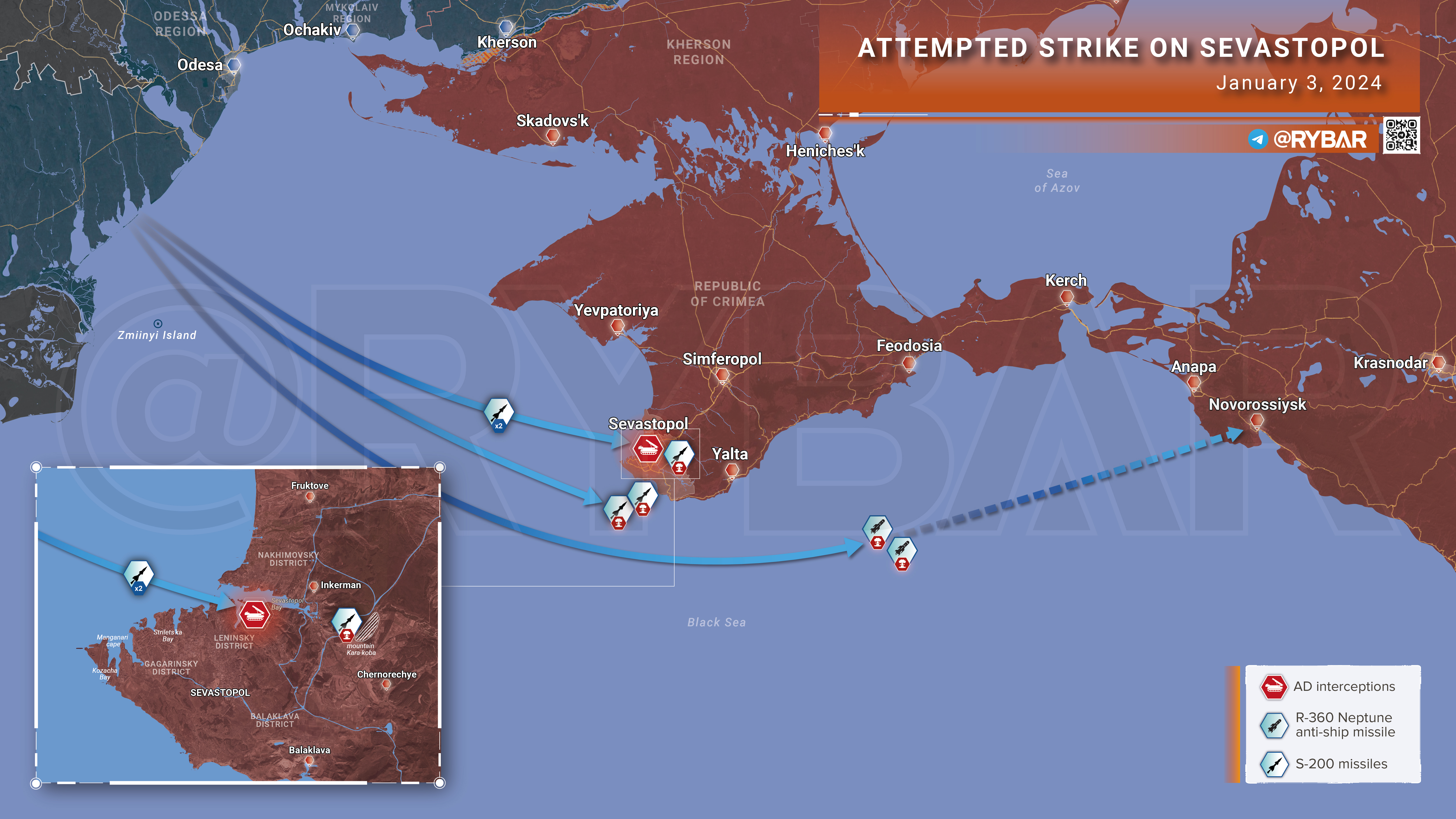
On the night of January 2-3, loud pops of air defense operations were heard throughout Sevastopol . Exactly after a massive strike by the Russian Armed Forces, Ukrainian forces tried to strike back at the peninsula. Two S-200 anti-aircraft missiles were fired from the vicinity of the Alibey test site in the Odessa region . One of them was shot down on approach to Sevastopol, and the second fell in the area of Mount Kara-Koba without causing any damage.
Apparently, the Ukrainian Armed Forces again tried to attack the warehouses and infrastructure of the Black Sea Fleet on the northern side of Sevastopol and in the vicinity of Inkerman . At the same time, units of the 31st Air Force and Air Defense Divisions marked up to six air targets. Presumably, two more S-200s fell into the water west of Cape Fiolent , before reaching Crimea.
And two more missiles (based on the speed and flight path we can conclude that these were anti-ship Neptunes) flew past Sevastopol and their signal was lost in the direction of Novorossiysk . Apparently, the Ukrainian Armed Forces were aiming at some other objects, but the missiles, either due to a failure in the system or due to the active operation of electronic warfare, strayed from the trajectory and subsequently fell into the water.
As a result, the enemy attack failed. And, looking at the nature of its conduct, it seems that the Ukrainians were in a hurry, trying to interrupt the information feed, but to no avail. However, repeated attempts are possible in the coming days, including with the use of cruise missiles.
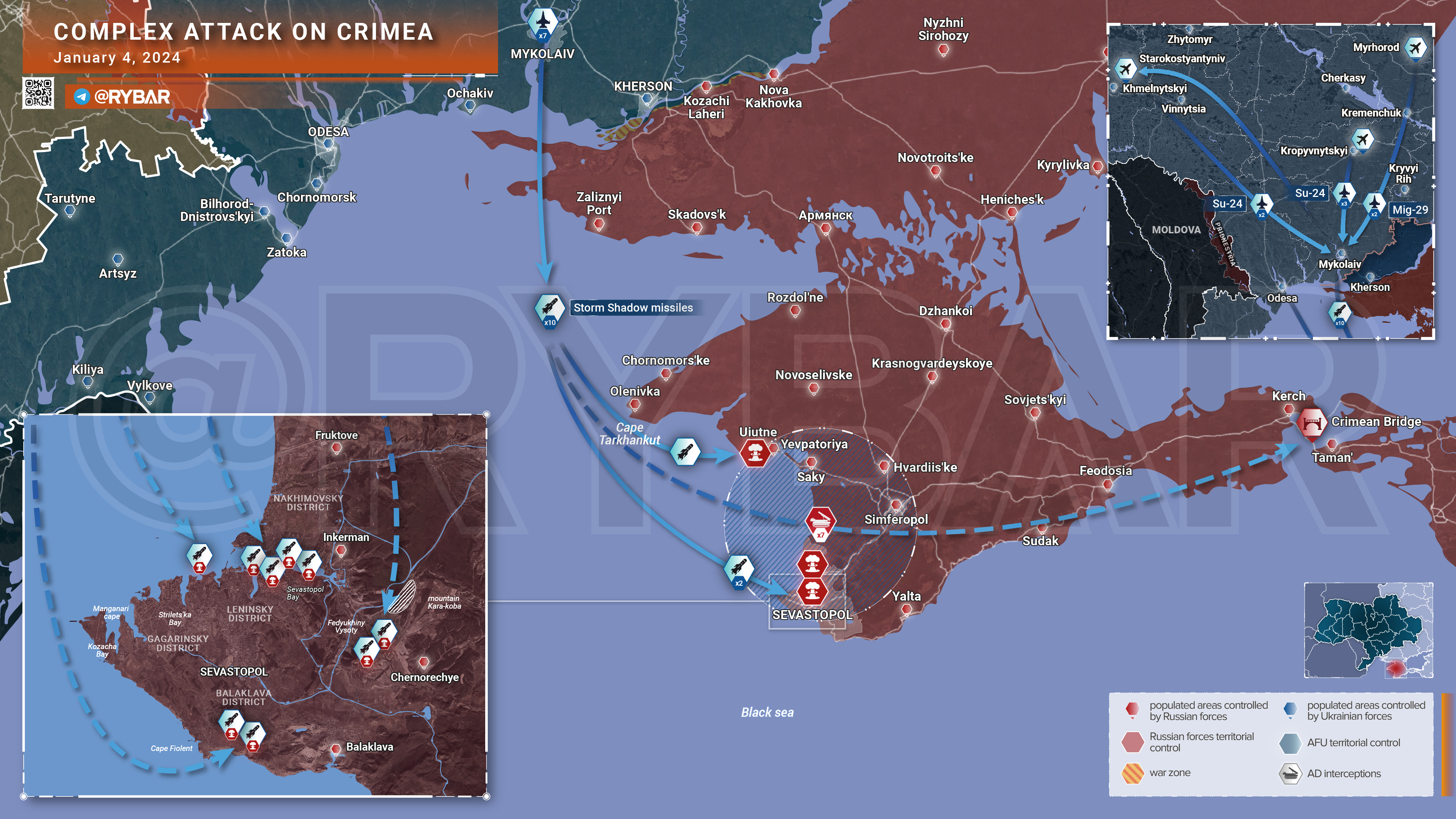
However, a day later, Ukrainian formations again tried to strike Crimea . This time, the Ukrainian Armed Forces approached the attack more prepared: in anticipation of the raid, the aviation moved to several bases to divert attention. At around 16.20, five Su-24M bombers and two MiG-29 fighters took off from the airbases of Starokonstantinov , Mirgorod and Kanatovo , which launched Storm Shadow cruise missiles and several ADM-160 MALD decoys in the direction of the peninsula.
The first missile was shot down over Uyutny near Yevpatoria . Storm Shadow debris caused minor damage to infrastructure, but no casualties were recorded. Two more "Storms", rounding Cape Fiolent , attempted to attack air defense units in Sevastopol . It was not possible to shoot down the missiles, but they did not reach their target - the military personnel of the 31st division continue to work. Several more air targets (the attacks were a combination of cruise missiles and decoys) were destroyed by the crew of the Pantsir-S1 air defense missile system over Pesochnaya Bay near Tauride Chersonese . And a couple of “Storms” were shot down in the vicinity of the Fedyukhin Heights and at the Balaklava Thermal Power Plant . Judging by the flight path, the target could be an important energy facility.
In total, Russian military personnel shot down ten missiles, most of which were Storm Shadow. The essence of this raid indicates the enemy’s tactics in attacks on Crimea. At the initial stage, the Ukrainian Armed Forces actively hit ships and objects of the Black Sea Fleet , forcing them to stay close to their own bases. Now the enemy is trying to destroy the air defense on the peninsula. And the next stage, judging by the trends, should be attacks on the Crimean Bridge. It doesn't matter that it won't provide any tactical advantage. The main thing is the PR effect, as well as reputational losses for the Russian leadership. At the same time, fighters of the 31st Air Force and Air Defense Division are now repelling a drone attack, after which a missile attack is possible.
Prisoner exchange
On the afternoon of January 3, the long-awaited exchange of prisoners of war took place between the Russian and Ukrainian sides. This event was preceded by a long negotiation process , sabotaged by the Ukrainian side.
In total, the Russian side was able to return 248 military personnel to their homeland , 75 of whom were rescued from Ukrainian captivity in exchange for five Azov commanders who were taken from Turkey.
In turn, the enemy announces the return of 230 military personnel of Ukrainian formations, including: 130 representatives of the Armed Forces of Ukraine (TRO - 14 , Navy - 14 ), the National Guard - 55 , the State Border Service - 38 , the National Police - one , and six other citizens. .n. Ukraine.
The situation on the front line and combat operations
In the Slobozhansky direction, the Russian Armed Forces are carrying out preventive work to destroy concentrations of enemy personnel and equipment in border settlements. Warehouses and deployment points of Ukrainian formations are covered with artillery fire, including the use of precision-guided ammunition.
In the Liman direction, the Russian Armed Forces continue to push through enemy defenses east of Makeevka , as well as in the Serebryansky forestry area . In addition, the footage posted by the enemy records the advance of the Russian Armed Forces in the direction of Tern and Yampolovka . There are still about three kilometers to go to the outskirts of neighboring settlements with several forest stands.
In the Soledar direction, positional battles are taking place in the area of Bogdanovka , Kleshcheevka and Kurdyumovka . The Russian Armed Forces are making attempts to advance on the approaches to Chasov Yar along the highway from Khromovo . In addition, several strong points were taken in plantings near the highway southeast of Bogdanovka .
The main events in the Donetsk direction are developing in the vicinity of the Avdeevsky fortified area . The Russian Armed Forces are advancing locally in the Krasnogorovka area and are shelling Pervomayskoye with artillery in anticipation of a possible operation to liberate the settlement.
In the South Donetsk direction, the line of combat contact has not undergone significant changes. At the same time, the Russian Armed Forces are systematically hitting various targets in Novomikhailovka and the surrounding area, using both airstrikes and mine-laden armored vehicles under remote control.
In the Zaporozhye direction, positional clashes continue in the area of Verbovoy and Rabotino . Small assault groups of the Russian Armed Forces are attempting to advance under the cover of air strikes in order to regain control over positions previously lost during the enemy’s summer offensive.
In the Kherson direction the situation has not undergone significant changes. The Russian Armed Forces are conducting a counter-battery fight, destroying identified enemy artillery and other equipment. Some time ago, two launchers from the IRIS-T air defense system were damaged or destroyed by strikes from the Lancet UAV. Ukrainian formations continue to try to transfer fresh forces to the bridgehead in Krynki on the left bank of the Dnieper, losing boats and personnel, including from kamikaze UAV strikes.
Shelling of rear areas and residential areas
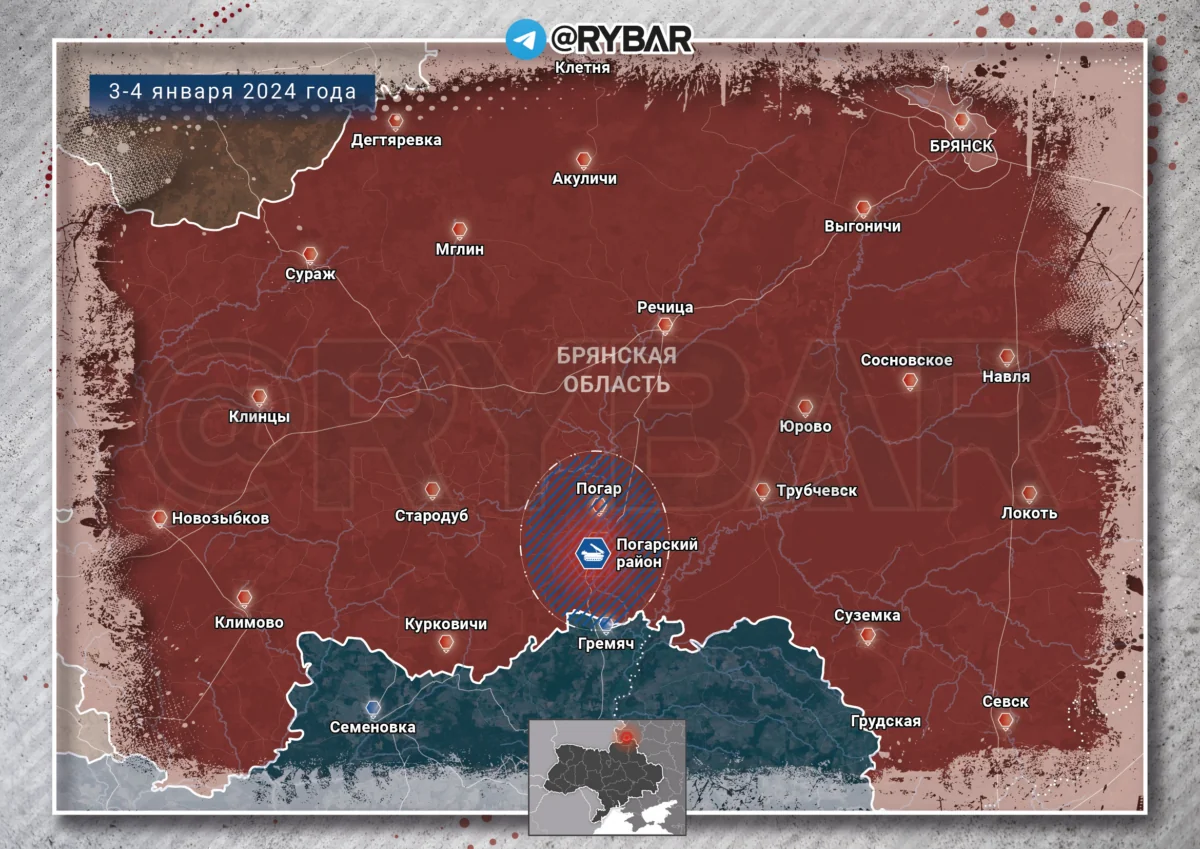
In the Bryansk region, the activation of air defense systems in the Pogarsky district was recorded . There is no information about the nature of the target, as well as the consequences on the ground.
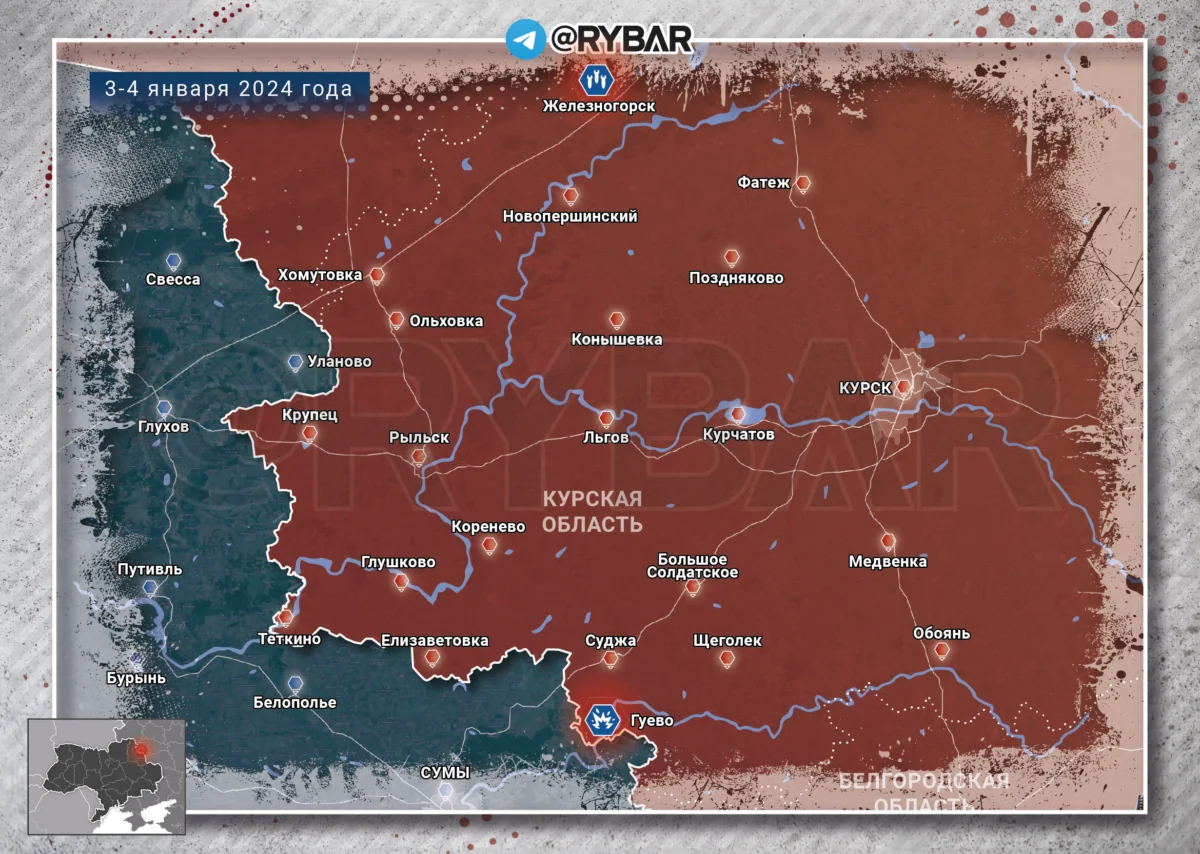
Armed formations so-called. Ukraine on January 3 damaged a substation in the Zheleznogorsk district of the Kursk region . Power outages were recorded in several settlements, and in Zheleznogorsk itself , 17 houses were left without heating as a result of a heating main break. On the afternoon of January 4, the border village of Guevo was also shelled .
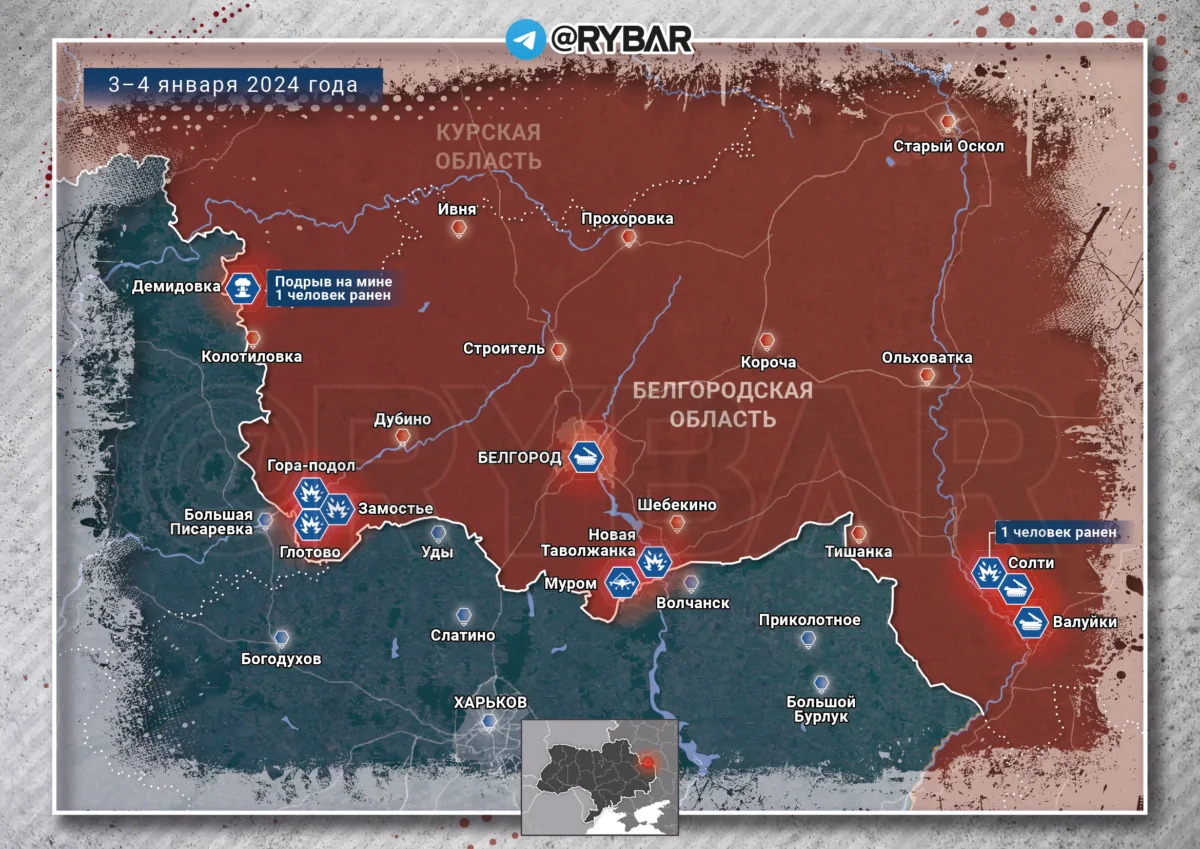
For several days in a row, the Russian Armed Forces have been repelling Ukrainian attacks on populated areas in the Belgorod region . According to the Russian Ministry of Defense, on the night of January 2-3, air defense crews on duty intercepted two Tochka-U missiles and seven Vilkha MLRS missiles. Already in the morning, the department reported on repelling another attack by the Ukrainian Armed Forces: six Tochka-U missiles and six more Vilkha MLRS missiles were shot down.
At the same time, shelling of border settlements continues. Thus, in the Valuysky GO the village of Soloti came under attack . Currently, it is known that several residential buildings were damaged and a 14-year-old girl was injured. In addition, Ukrainian formations shelled Glotovo , Zamosc and Nowa Tavolzanka with artillery. In Murom , Shebekinsky District, the enemy damaged a private house with a drop from a UAV. In Demidovka, an excavator hit a mine, a worker received shrapnel wounds and concussion.
The head of the region described the current situation as “tense.” They were also told that a meeting of the operational headquarters would be held on January 8, at which it was planned to consider the possibility of extending the winter holidays for a number of educational institutions in the Belgorod region.
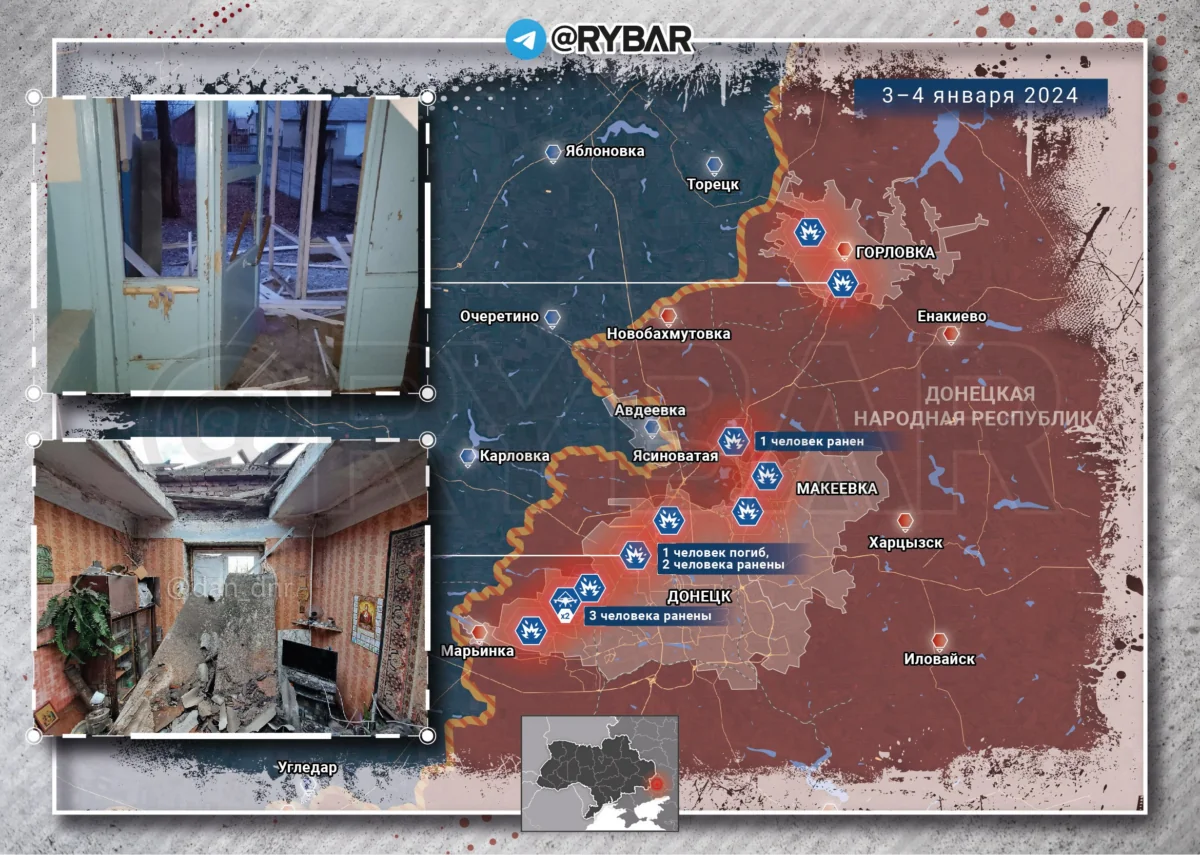
Shelling of populated areas in the Donetsk People's Republic also continues . Ukrainian formations are firing at the western regions of Donetsk and Gorlovka with cannon and rocket artillery, including NATO calibers. Private and multi-apartment residential buildings were damaged, and power supply was disrupted in Gorlovka . In the Kirovsky district of Donetsk, two men and a woman were injured as a result of a drone drop. In the Kuibyshev region, a woman was killed and a man was wounded by fire from Ukrainian forces. Another woman died in the Yasinovatsky district .
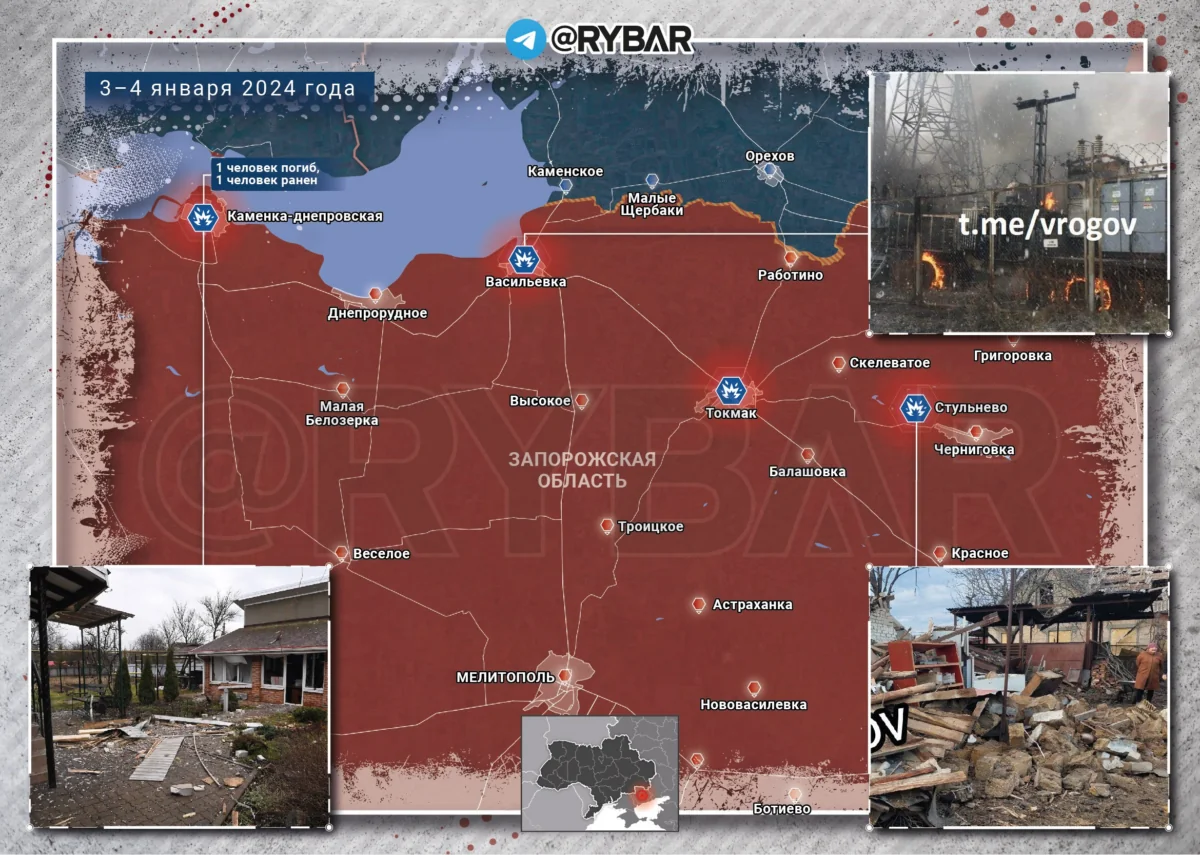
In the Zaporozhye region, Ukrainian formations attacked at least four settlements on January 3-4. In Kamenka-Dneprovskaya, private houses were damaged during several shellings, one civilian was killed and another civilian was injured. In addition, Tokmak and Stulnevo were under enemy fire , as well as Vasilyevka , where the power plant was damaged.
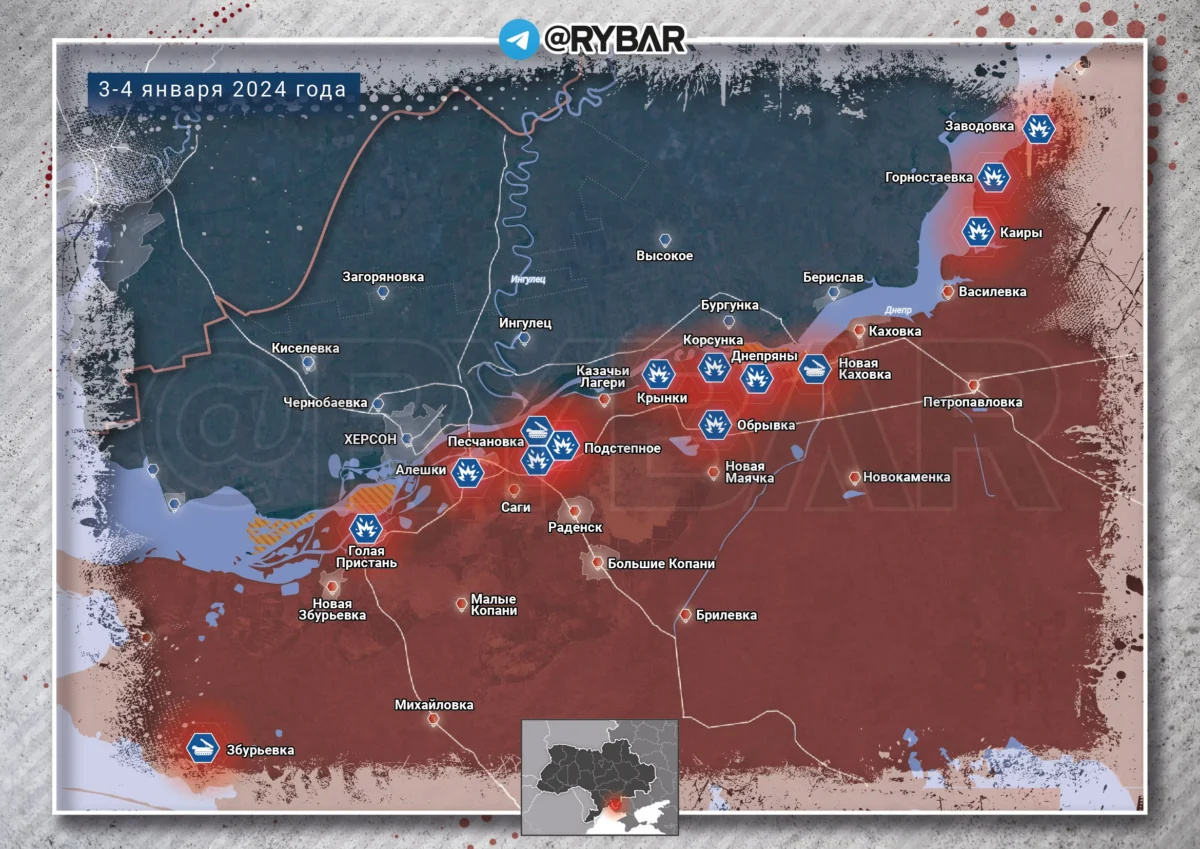
In the Kherson region, artillery strikes continue on various settlements on the left bank of the Dnieper . During January 3-4, at least eleven settlements were hit, and in Zburyevka , Peschanivka and Novaya Kakhovka , several UAVs were shot down by air defense forces on duty.
Political events
About the supply of equipment and other assistance so-called. Ukraine
The Czech Republic supplied 26 Dana-M2 modifications for the needs of Ukrainian troops along with several thousand DN1CZ shells with a firing range of up to 25.5 km. Germany has not yet decided on the supply of Taurus missiles; government spokesman Steffen Hebestreit said that the position of the state authorities has not changed. However, despite this, rumors are circulating on the Internet about the supply of these missiles to the Ukrainian Armed Forces.
There are also problems with other types of German-made weapons. In particular, according to media reports, Germany has to transport most of the Leopard tanks, damaged but surviving, across the border of Ukraine, since the tanks were transferred without spare parts. However, the German authorities announced a new package of arms supplies for the Armed Forces of Ukraine. Enemy formations will receive the SKYNEX air defense system with ammunition, two TRML-4D radar stations, 10 Marder infantry fighting vehicles, ammunition for Leopard 2A6 tanks, missiles for the IRIS-T SLM air defense system, ammunition for the Patriot air defense system, as well as various types of 155-mm ammunition.
At the same time, US administration spokesman John Kirby said at a briefing that the White House will not be able to find funds from alternative sources if Congress does not agree on a request for new assistance to Kiev, and Ukrainian Foreign Minister Dmitry Kuleba noted that Kiev does not have a Plan B ” in case Western aid is cut, as they are confident in supplies.
On the obvious problems of mobilization
Citizens of the so-called Ukrainian males who are unable to flee the country are faced with more and more new problems. Capture continues on the streets of various cities, and drones are being used to search for fugitives at the border.
At the same time, the authorities are discussing various options for a new mobilization, including openly mocking ones. Thus, the ex-Minister of Economy of Ukraine Milovanov proposed mobilization through a lottery or drawing of lots.
About problems on the Polish-Ukrainian border
Polish farmers resumed pickets and blocking of the Medika-Shegini checkpoint on the Polish-Ukrainian border. Protesters inspect trucks and allow only humanitarian aid and perishable food for the so-called Ukraine.
https://rybar.ru/chto-proishodit-v-zone ... -yanvarya/
Google Translator
*******
Ukraine SitRep: Zelenski's Propaganda Outlet Is Leading His Decline
In early 2022, at the start of the war in Ukraine, the government of President Zelenski monopolized all television news:
Since the early days of Russia’s full-scale invasion in 2022, the people of Ukraine have had access to a single source of television news — an all-day broadcast packed with footage of Ukrainian tanks blasting Russian positions, medics operating near the frontline and political leaders rallying support abroad.
The show, Telemarathon United News, has been a major tool of Ukraine’s information war, praised by the government officials who regularly appear on it for its role in countering Russian disinformation and maintaining morale.
“It’s a weapon,” President Volodymyr Zelensky of Ukraine said last January of the program, which is jointly produced and broadcast 24/7 by the country’s biggest television channels.
The Telethon, as it is known in Ukraine, became the sole source of news on Ukrainian airwaves. It was partially financed by the Ukrainian regime. It soon developed into the main outlet for the Ukrainian government to spread its propaganda. It continuously presented alleged Ukrainian successes and derided Russia's capabilities.
It had deluded many Ukrainians into believing that their country can win the war.
But since the much propagandized 2023 'counteroffensive' has failed people have turned away from it.
A few still hang on. In a recent debate with military officers in Ukraine one pimpled youngster, drunk on Telethon disinformation, asked one of the Ukrainian officers about the 'bad quality of Russian weapons'.
He received an unexpected response. (I have seen the video of the exchange on Twitter but fail to re-find it.)
Strana, the Ukrainian news service prohibited in Ukraine and Russia, reported the exchange (machine translation):
Meanwhile, the Ukrainian military is discussing that at the end of the second year of the war, the Russian army is better armed and equipped than the Ukrainian one. This was stated by the battalion commander of the third assault brigade (one of the main strike forces of the Armed Forces of Ukraine) Rollo.
This is how he answered the question of what the average Russian military equipment is and "how much worse it is than ours."
"The Russian army is no worse than the Ukrainian one, even better. Technologically better equipped, more equipment, better weapons, better equipment than the Ukrainian one. What makes you think they're worse? This is even some kind of humiliation that turns out to be ours. Like, "f**k you're fighting the law and there's nothing you can do?". But because they are stronger - this is objective, " Rollo said.
According to him, the Russians not only have better equipment, but also state programs for equipping and providing the army.
"Don't underestimate the opponent, this is a very serious opponent. More serious than most armies in the world. Treating them like dol***bam and lo*am, that's what we do, dol***oby and lo*i, if we do that," Rollo added.
Other commanders advised turning off the telethon at home, which promotes the idea that the Russian army is weak.
(I do not know what "dol***bam" and "lo*am" stand for but they don't seem to be nice words.)
The third assault brigade is part of AZOV, the fascist organization that has grown exponentially under the Zelenski regime.
If even its ideological deluded officers freely admit that Russian forces are superior to them, imagine how the average Ukrainian soldier on the ground feels about his country's chances to win the war.
In early March 2022 I had warned that Lies Do Not Win Wars. Ukrainian propaganda, with support from western media, the neoconservative ISW and the disinformation branch of Britain's Ministry of Defense, has been full of lies and exaggerations. But the real war is lost on the ground and, over time, its reality seeps in.
The Telethon has lost its usefulness due to the constant disinformation it has spread. Its viewership is down to 10% as the Ukrainian people now get their news from Telegram and tune their TVs to reality shows and other diversions on different channels.
That the New York Times has finally picked up on this can be interpreted as a U.S. government attempt to further distance itself from the Zelenski regime in Ukraine:
Another concern is that Telemarathon has transformed into a public relations operation for Mr. Zelensky, who remains Ukraine’s most trusted political figure but has seen his approval ratings decrease in recent months.
Figures compiled by Mr. Kulias show that members of Servant of the People, Mr. Zelensky’s party, accounted for more than 68 percent of the program’s political guests in 2023, with this proportion rising steadily throughout the year. Servant of the People controls half of the seats in Parliament.
“It’s like a unanimous point of view,” Andrii Khantil, a 41-year-old lawyer, said of Telemarathon on a recent evening near the Golden Gate, a reconstructed gateway that marked the entrance to Kyiv in medieval times. “It’s not really what we need. It’s not helpful."
This attack on Zelenski's propaganda outlet comes while there is a new spat between the president and the commander of the Ukrainian force over the additional mobilization of 500,000 men. Zelenski had said that this would fulfill a requirement that the military had made.
General Zaluzny publicly rejected that claim:
In response to recent statements suggesting a potential mobilization of up to half a million people in Ukraine, the Commander-in-Chief of the Armed Forces, Valery Zaluzhny, said that the military command has not formally requested the mobilization.
“The military command has not made a single request [to the authorities] for any figures. The military command continues to perform the function of protecting the state and, accordingly, forms its requests for ammunition, weapons and human resources,” Zaluzhny stated during a national telethon.
“This is done on an ongoing basis, but we do not carry out [such requests] in some separate format by submitting it to the government or the Verkhovna Rada,” he added.
Zelenski's attempt to pass the mobilization buck to Zaluzny has failed. As the reality of a lost war bubbles to the surface his public ratings will sink to new lows.
Gordon Hahn describes the atmosphere in Ukraine as pre-revolutionary:
Kiev is now gripped by crisis politics. With the Ukraine’s defense lines and army in slow-motion collapse and extreme discontent among top military commanders and across the political elite, Ukrainian President Volodomyr Zelenskiy is fighting for his political and personal survival. More importantly, the stakes could not be higher for the Maidan regime’s coalition of nationalists, neofascist, corruptionaires, new oligarchs, and the occasional republican. Meanwhile, the young Ukrainian state, based on still poorly consolidated quasi-republican institutions and a nationalist ideology, is at risk of disintegration, dissolution, and even disappearance. It surrounded by growing threats: the Russian army, angry Ukrainian soldiers and commanders, Kiev’s financial and economic insolvency and dissipation, popular desperation, and the risk of palace or military coups, even a new ‘Galician’ civil war.
Soon something will break.
The telethon that had helped Zelenski to gain the peoples' attention and admiration is now leading the path to his decline.
I doubt that he, at the end of this years, will still be the president of Ukraine.
Posted by b on January 4, 2024 at 10:21 UTC | Permalink
https://www.moonofalabama.org/2024/01/u ... .html#more
******
Citizenship for foreign volunteers
January 4, 12:55

Foreigners who enlist in the RF Armed Forces can count on receiving Russian citizenship. Everything is logical here. If you fight for Russia, you have the right to be a citizen of Russia.
Family members of a volunteer can also count on a Russian passport.
https://colonelcassad.livejournal.com/8872667.html
Citizens of Ukraine who lived in Sevastopol before March 18, 2014 can obtain a Russian passport
January 4, 16:30

Today is truly a day of interesting documents.
Citizens of Ukraine who were born and permanently resided in Crimea or Sevastopol before March 18, 2014 will be able to apply for Russian citizenship.
https://colonelcassad.livejournal.com/8873129.html
Greetings from Kim Jong-un
January 4, 23:20

The United States has officially stated that the Russian Armed Forces have already used at least two North Korean ballistic missiles with a range of 900 kilometers in Ukraine and intend to launch them in the future. According to Kirby's statement, the launches took place on December 30 and January 2. The United States does not provide any material evidence (for example, missile debris with North Korean markings).
Of course, there is nothing wrong with the very fact of using North Korean missiles. We get additional means of fire destruction, the Koreans get money for missiles and experience in using their missiles in combat conditions in case they have to work on Seoul.
The United States claims that a North Korean KN-23 ballistic missile (an illegitimate relative of the Iskander) was launched into Ukraine. This OTRK has several modifications with different ranges, different warheads and different accuracy.
https://colonelcassad.livejournal.com/8873979.html
40% of Kyivstar infrastructure destroyed
January 5, 10:13

40% of Kyivstar infrastructure destroyed
Russian hackers have had access to the internal systems of the largest Ukrainian mobile operator Kyivstar since at least May 2023. Ilya Vityuk, head of the SBU cybersecurity department, told Reuters about this. He said the Dec. 12 attack caused “catastrophic” destruction and should serve as a big warning to the West: “no one is untouchable.”
Catastrophic destruction: Russian hackers deal devastating blow to Ukraine's largest operator AP
Russian hackers have been on the system of Ukraine's largest operator Kyivstar since at least May last year in a cyberattack that should serve as a "big warning" to the West. The head of the SBU cybersecurity department, Ilya Vityuk, spoke about this in an exclusive interview with Reuters.
In the interview, Vityuk revealed details of the December 12 hack, which he said resulted in “catastrophic” destruction and was aimed at inflicting a psychological blow and gathering intelligence information. The attack destroyed “virtually everything,” including thousands of virtual servers and computers, Vitiuk said, calling it the first example of a destructive cyberattack that “completely destroyed the core of a telecom operator.”
On December 12, a hack disabled Kyivstar services for approximately 24 million users for several days, Reuters recalls. “This attack is a big signal, a big warning not only for Ukraine, but also for the entire Western world, so that they understand that no one is untouchable,” Vityuk said.
https://russian.rt.com/inotv/2024-01-04 ... ri-nanesli - zinc
Russian hackers from the Solntsepek group took responsibility for the destruction of the network infrastructure of the largest telecom provider in Ukraine.
Team of Russian hackers penetrated the network of the Ukrainian operator and firmly established itself there. During the attack, the internal network infrastructure of the organization, which provides communications not only to millions of subscribers, but also to the Ukrainian Armed Forces, was destroyed. But that's not all. Our hackers got hold of the personal data of the company’s clients: full names, passport details and addresses. We are talking about millions of records.
In addition, backups were also destroyed - as proof of this, the hackers provided screenshots of the backup server they took control of. Kyivstar “possibly” still has some offline backups on tapes, but it is too early to talk about the timing and possibility of a complete restoration of the entire infrastructure - the scale of destruction is too great, and the relevance of backup copies is a big question. Moreover, Russian hackers left many surprises for their opponents.
As our colleagues said ( https://t.me/readovkaru/5225 ) earlier, the attack could not have been so effective without help from within. Team "Solntsepek" ( https://t.me/solntsepekZ) has already expressed gratitude to the caring employees of Kyivstar.
https://t.me/readovkanews/70728 - zinc
Great job. Glory to Russian hackers.
https://colonelcassad.livejournal.com/8874285.html
Google Translator
*******
Did Armenia Re-Export Indian Shells To Poland To Pass Along To Ukraine At The US’ Behest?
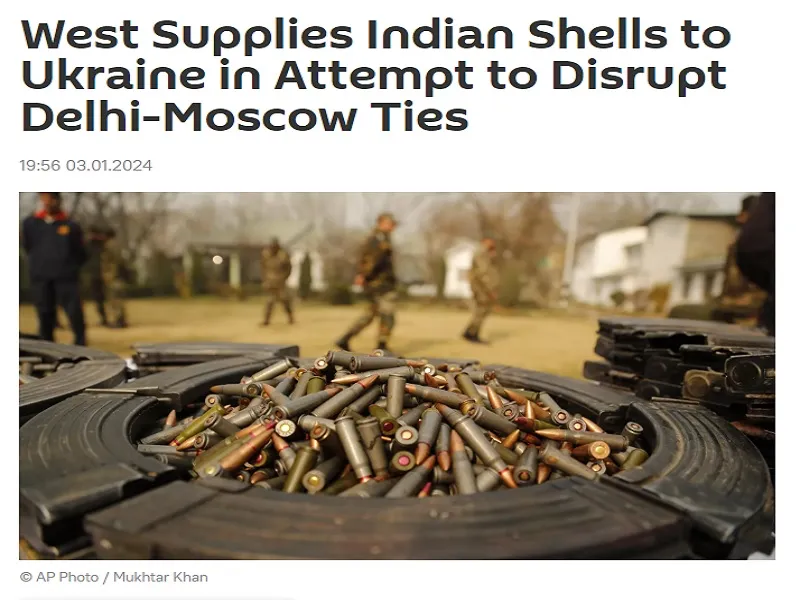
ANDREW KORYBKO
JAN 5, 2024
The US orchestrated this scandal not only to help complete Armenia’s pro-Western pivot and stir trouble in Indo-Russo ties, but also provoke India’s denial, which could then be spun to fuel the false narrative that it pivoted away from the West towards Russia. The resultant optics could manipulate Westerners into supporting more muscular moves against India in the future, perhaps even as far as sanctions, which could further worsen bilateral relations across the coming year.
The “Ukrainian Front” account tweeted footage on 30 December of what some experts have claimed are Indian 155-mm artillery shells being loaded into a Polish-made Krab self-propelled howitzer, which prompted several days later Delhi to deny that it exported any such ammo to that country. The timing of this scandal coincided with the end of External Affairs Minister (EAM) Dr. Subrahmanyam Jaishankar’s impromptu trip to Moscow that recalibrated India’s multi-alignment policy and rankled the West.
Leading influencers like former American Ambassador to Russia Michael McFaul and British journalist Isabel Oakeshott fearmongered about Indian-Russian ties immediately after his visit, which they falsely portrayed as a betrayal of its values and an alleged pivot towards Russia instead of a rebalancing. The larger context was that Indo-US ties had deteriorated over the latter’s hosting of a Delhi-designated terrorist-separatist that the Justice Department claimed was the target of an Indian assassination plot.
Biden had also declined Prime Minister Modi’s invitation from September to participate in mid-January’s Republic Day celebrations in the middle of December at the same time as his government hosted Pakistani Chief Of Army Staff Asim Munir, both of which further boded ill for bilateral ties. Over the past month, two major information warfare narratives were unveiled against India after the Washington Post claimed that it’s meddling in US affairs while Semafor claimed that its leader “purged” the parliament.
Neither is true and both are misportayals of reality, but they still served to establish the false pretext for justifying the US’ own meddling in India ahead of its national elections in spring, the operation of which is driven by the desire to punish Prime Minister Modi for his independent foreign policy. McFaul and Oakeshott’s follow-up pieces were therefore the latest manifestations of these newfound Western smears against India’s international reputation.
This backdrop is important to keep in mind since it helps explain the latest scandal about Ukraine’s alleged use of Indian shells against Russia. The Eurasian Times reported that “The United Arab Emirates and Armenia have been the known customers of 155 mm shells. An unnamed European country, most probably Poland or Slovenia, recently purchased the artillery shells”, which are leads worth pursuing. Both have close ties with India, but Armenia is pivoting towards the West while the UAE remains neutral.
At the end of last year, “Lavrov Warned Armenia Against Ceding Its National Security To NATO”, which was Russia’s most detailed and harshest response yet to its formal CSTO mutual defense ally’s pivot towards that enemy bloc following the years-long process that accelerated since last September. By contrast, Emirati President Mohammed bin Zayed Al Nahyan defied the West to accept President Putin’s invitation to be his guest of honor at June’s St. Petersburg International Economic Forum (SPIEF).
The Russian leader then described the UAE as his country’s “main trade partner in the Arab world” last month, while just last week the UAE put its excellent relations with Russia to good use in mediate a prisoner swap between Moscow and Kiev, after which it reaffirmed its desire to mediate peace talks. Emirati entities have also been sanctioned by the US for allegedly violating that country’s anti-Russian sanctions regime.
Given this state of affairs, it’s unimaginable that the UAE would have re-exported Indian shells to Poland or Slovenia to pass along to Ukraine at the US’ behest, and much more believable that Armenia was the one that did this instead. If that’s the case, then this would mean that Armenia was only pretending to practice a clumsy balancing act between NATO and India, but was only manipulating the second into sending it more equipment that it then intended to indirectly transfer to Ukraine to help the first.
India innocently thought that Armenia was increasingly relying on it as a replacement for Russia amidst the Western-instigated tiff with its traditional security partner in order to maintain some element of sovereignty during this process instead of becoming disproportionately dependent on NATO. Having projected its own multi-alignment paradigm onto its partner, India accordingly provided Armenia with a widening array of defense equipment (presumably via Iran), only for Yerevan to ultimately betray Delhi.
Poland was likely the third party that passed along these shells to Ukraine considering its leading role as NATO’s military conduit for waging its proxy war on Russia through that former Soviet Republic. It’s possible in theory though that they were passed along by Slovenia, but even in that case, they would have likely transited across Poland anyhow. For all intents and purposes, it’s a safe to assume that Poland was most responsible for facilitating Armenia’s transfer of Indian shells to Ukraine at the US’ behest.
Regardless of however long they were in that country, it’s worth reminding the reader that the footage was only shared on social media immediately after EAM Jaishankar’s trip to Moscow where he recalibrated India’s multi-alignment policy in light of newfound troubles in its ties with the US. This scandal also occurred against the backdrop of the US’ increasingly intense information warfare campaign against India ahead of this spring’s national elections.
It's therefore possible that the US orchestrated the timing of this footage’s release in a desperate attempt to sow divisions in the decades-long special and privileged Indian-Russian strategic partnership that was immensely strengthened after that visit. This working hypothesis aligns with the recently established precedent of American meddling and smears against India as revenge for Prime Minister Modi’s independent foreign policy, particularly his refusal to condemn and sanction Russia.
Armenia is unlikely to have decided on its own to betray India, nor to have devised this complicated logistics scheme all by itself for indirectly arming Ukraine in support of NATO’s proxy war on Russia. Rather, it’s much more likely that the US told Armenia to do this in exchange for either something tangible or more vague promises of support, which in any case was agreed to by Prime Minister Pashinyan since this couldn’t have taken place without his authorization.
His in-person participation in the informal CIS heads of state meeting in St. Petersburg late last month, which was a notable exception to his informal boycott of Russian-organized economic, political, and security events amidst his Western-instigated tiff with that country, could have therefore been a ruse. Knowing now what probably took place before that with respect to Armenia’s indirect arming of Ukraine via Poland at the US’ behest, he probably participated in order to preemptively deflect accusations.
By pretending to reconsider his country’s pro-Western pivot and making a pretense of appearing to be pragmatic by taking part in that meeting, Pashinyan thought that he could strategically disarm President Putin, though the Russian leader is much too wise to be fooled by this charlatan. Prime Minister Modi is also a very wise leader too and is accordingly expected to reconsider his country’s military ties with Armenia if evidence emerges in support of the hypothesis that it transferred Indian shells to Ukraine.
In that event, this incident could serve to push through the Indian-Azeri rapprochement that was proposed here at the start of the year, thus unlocking those two’s geo-economic potential and making the North-South Transport Corridor (NSTC) in which they both participate more strategic than ever. If that happens, then Armenia would lose its reliable Indian military partner and become completely dependent on NATO, though it should have thought about that before going along with this scheme.
While the West would be delighted to solidify its full-spectrum control over Armenia, its perception managers will likely spin any Indian complaints against that country and possible downscaling of their military ties (if not outright abolishment) as supposed “proof” of its “anti-Western agenda”. This false narrative would build upon the emerging one pushed by McFaul and Oakeshott misportraying India as “pro-Russian, anti-Western, and therefore a rogue state” in order to justify more meddling and smears.
With that scenario in mind, it might very well have been the case that the US orchestrated this scandal not only to help complete Armenia’s pro-Western pivot and stir trouble in Indo-Russo ties, but also to provoke the aforesaid response in order to make its anti-Indian campaign more believable. The resultant optics could manipulate Westerners into supporting more muscular moves against India in the future, perhaps even as far as sanctions, which could further worsen bilateral relations across the coming year.
https://korybko.substack.com/p/did-arme ... ian-shells



 SIMPLICIUS THE THINKER
SIMPLICIUS THE THINKER


